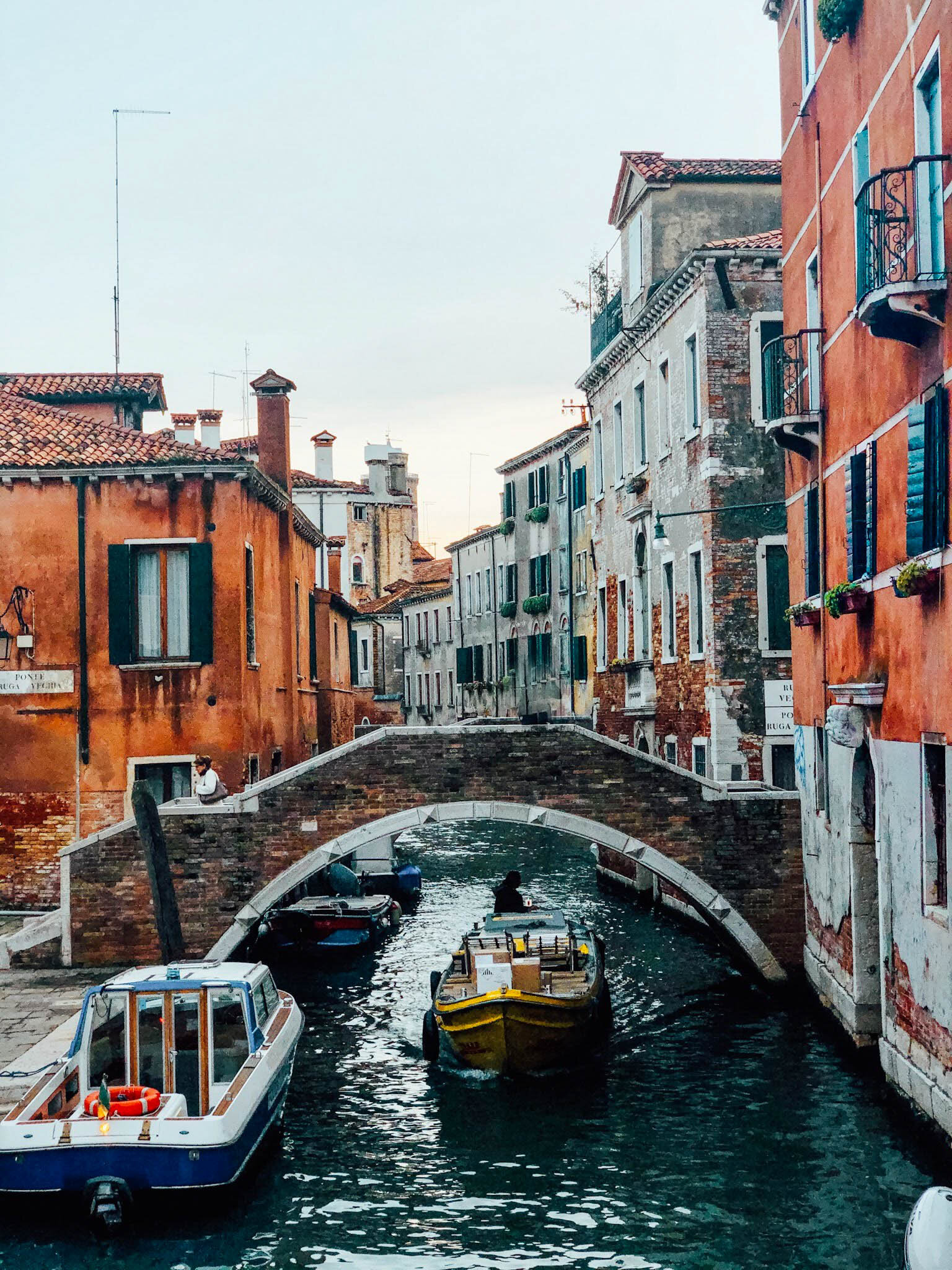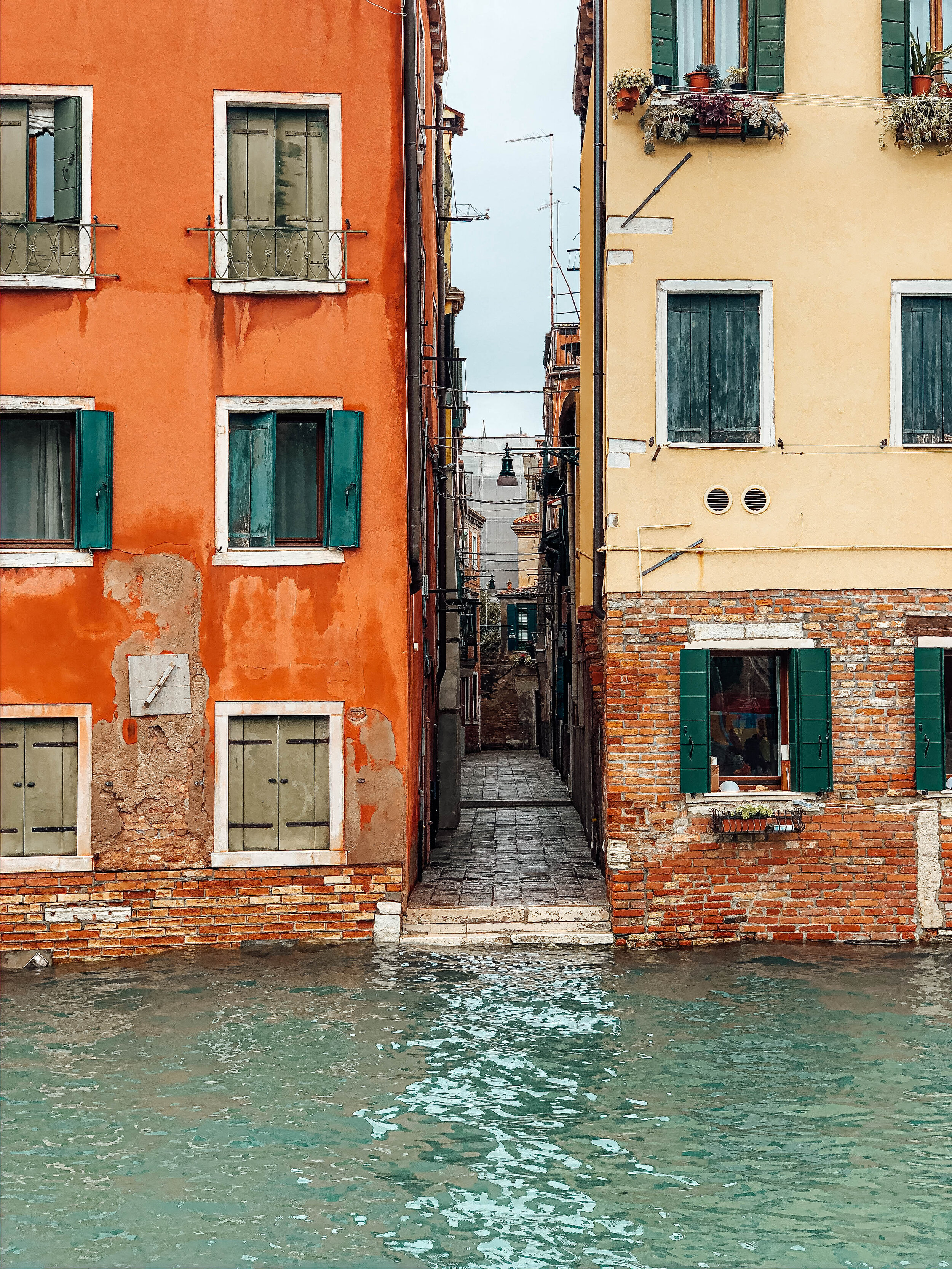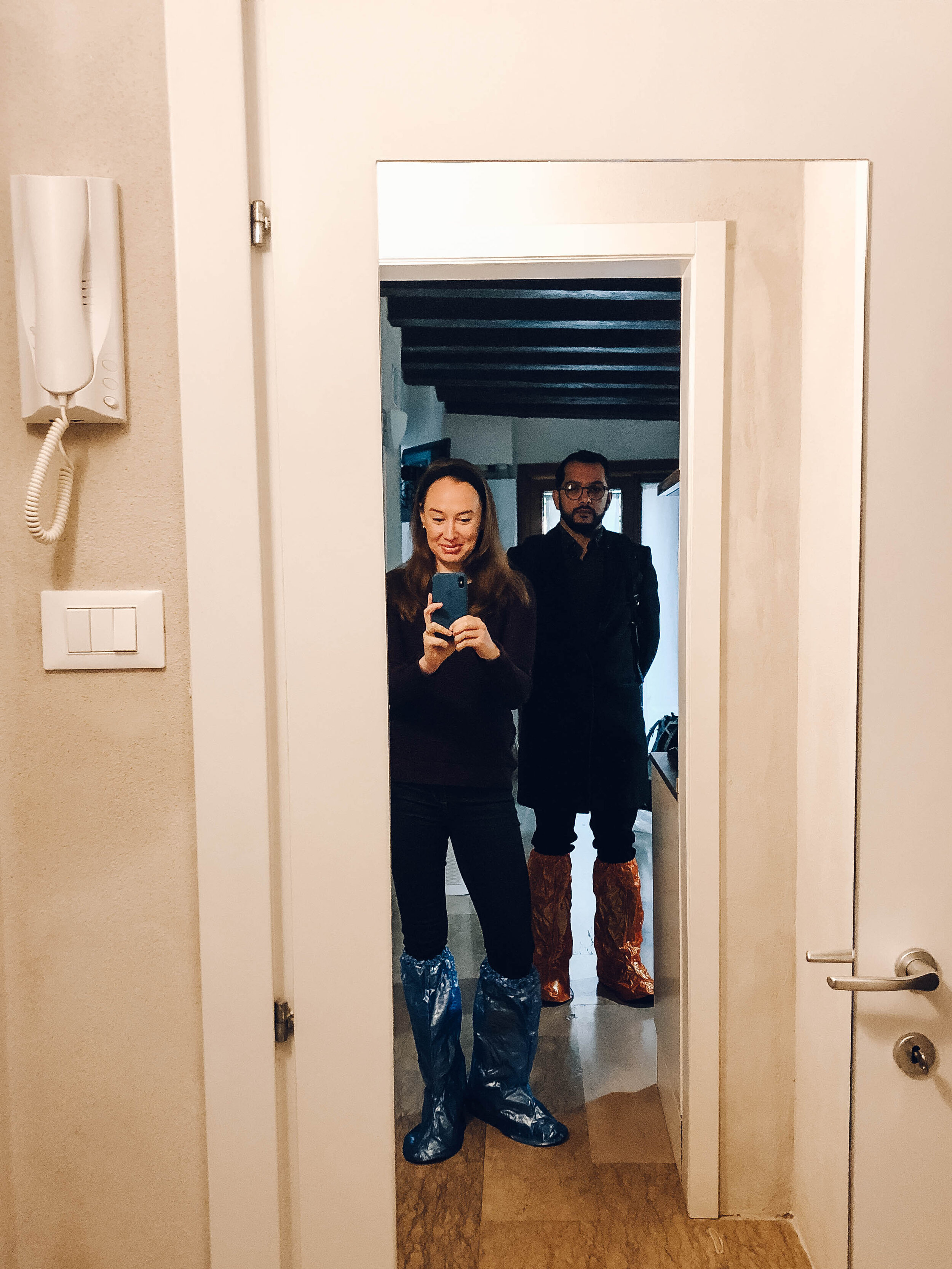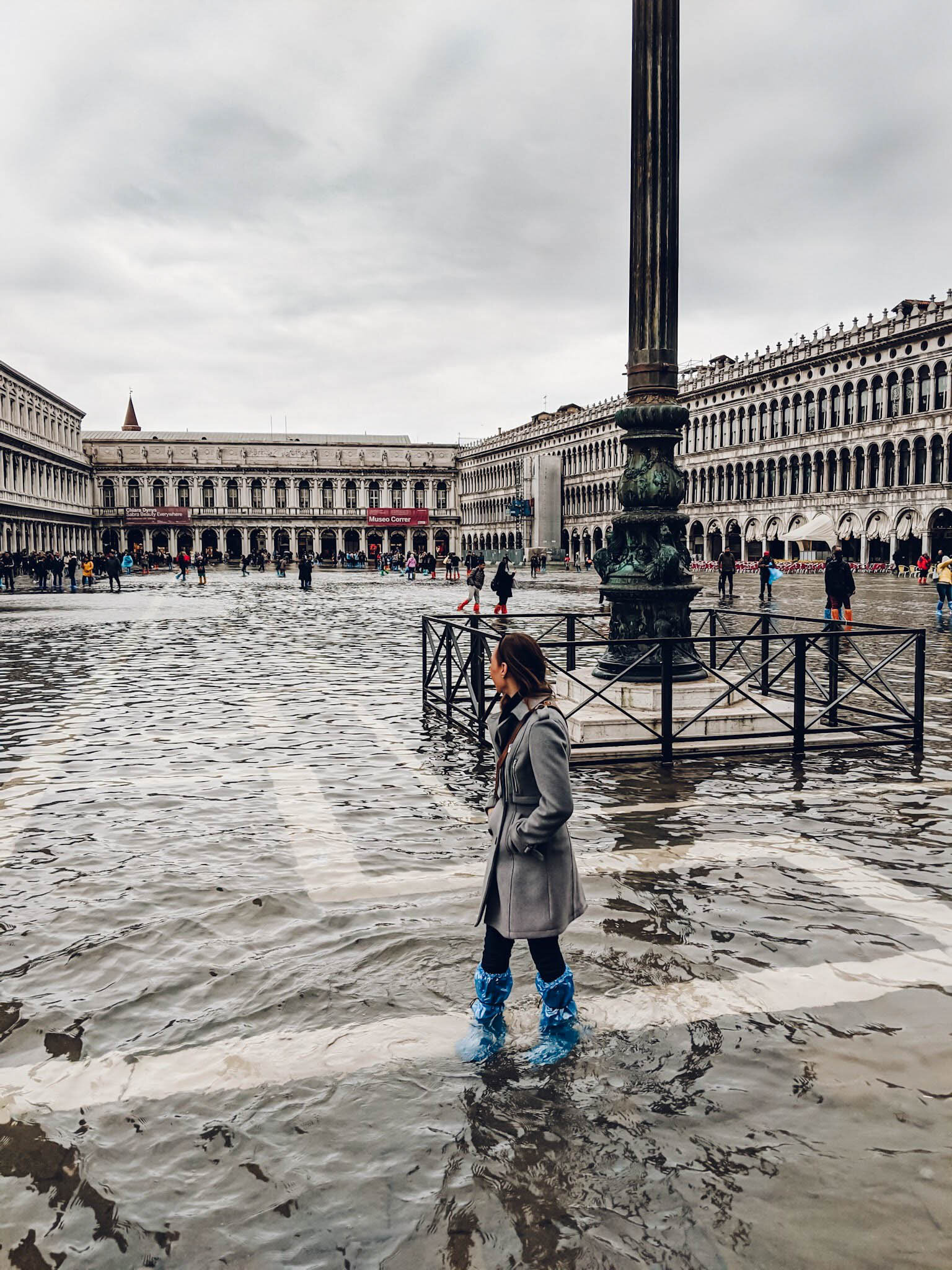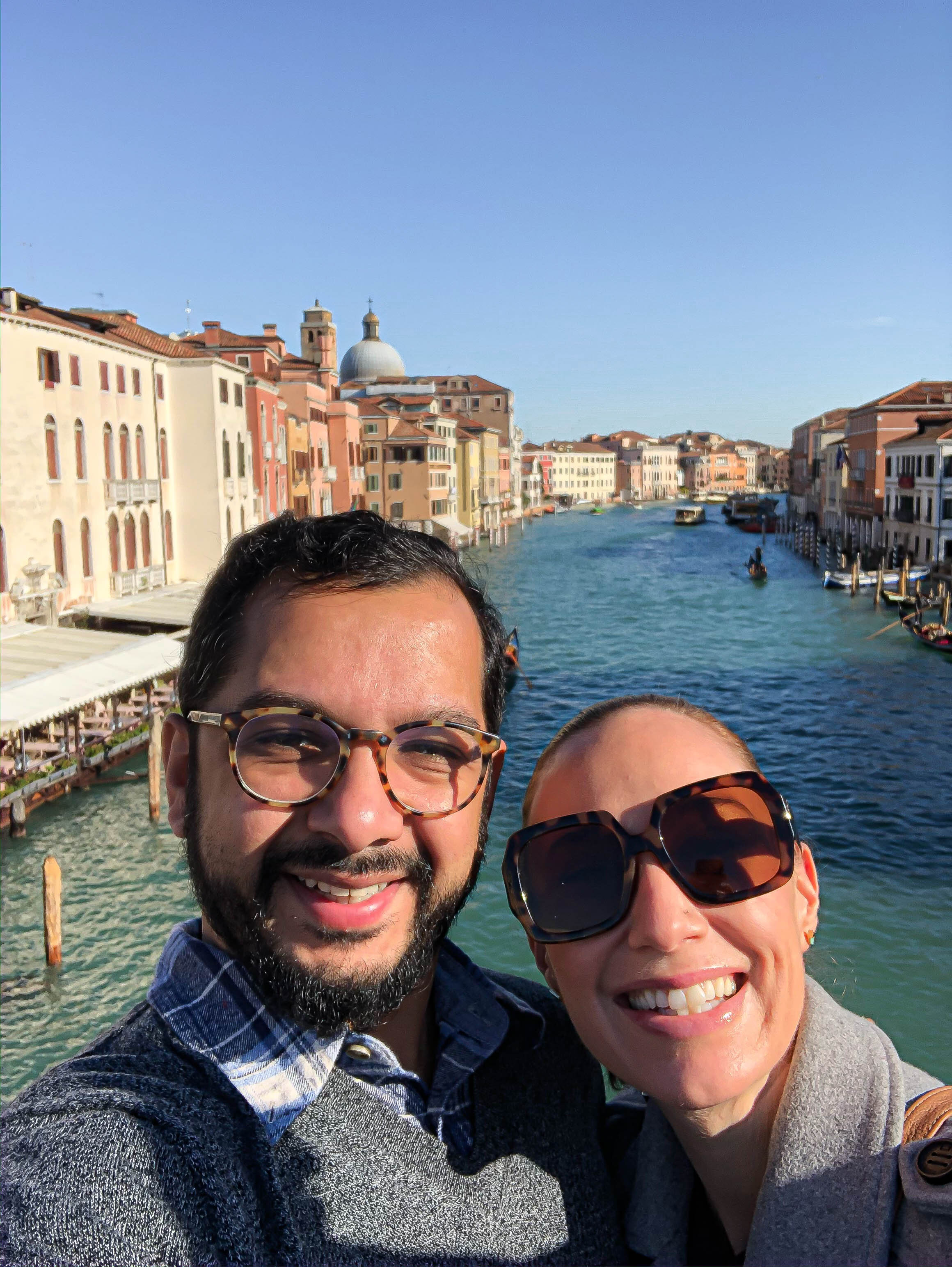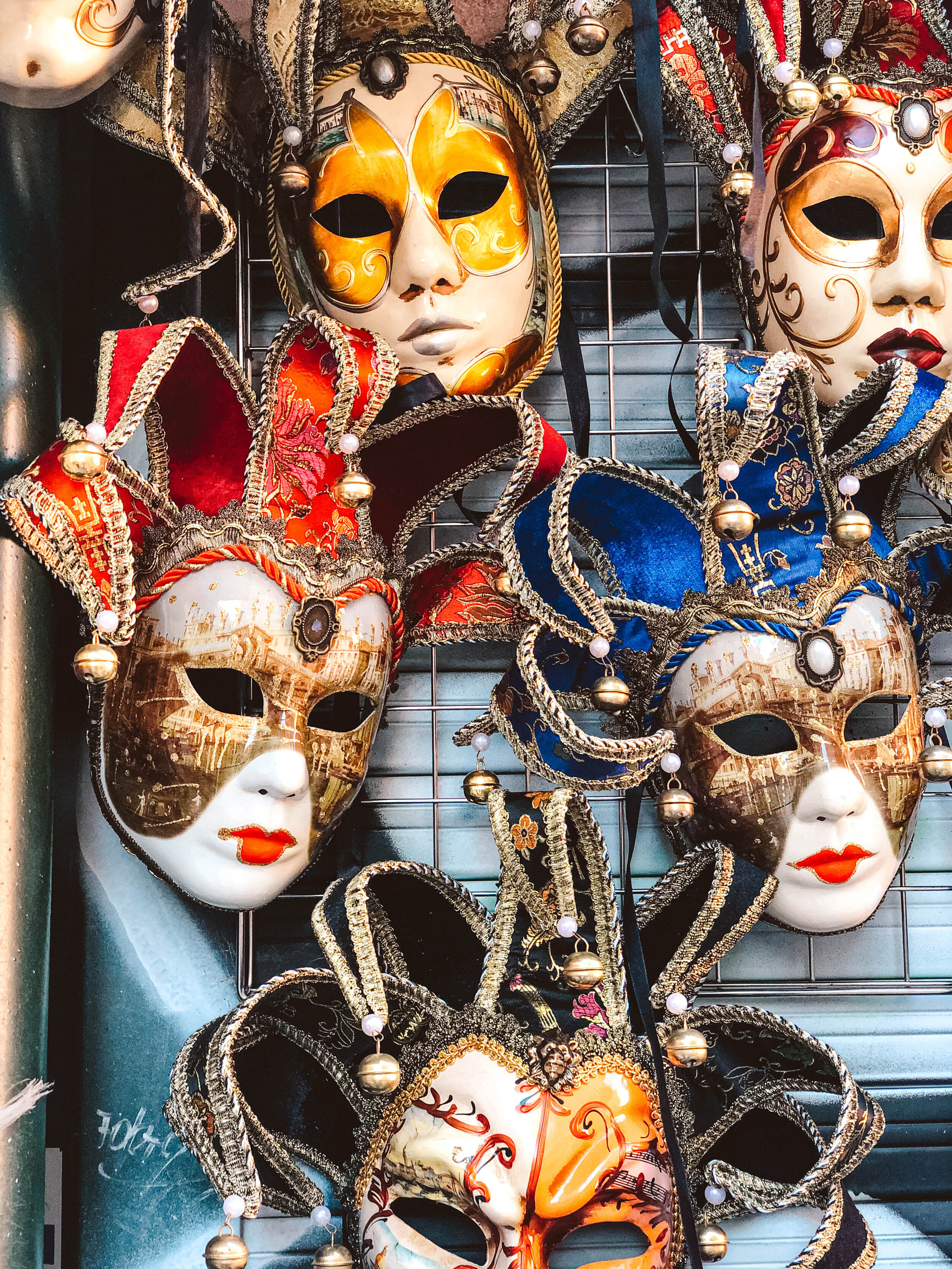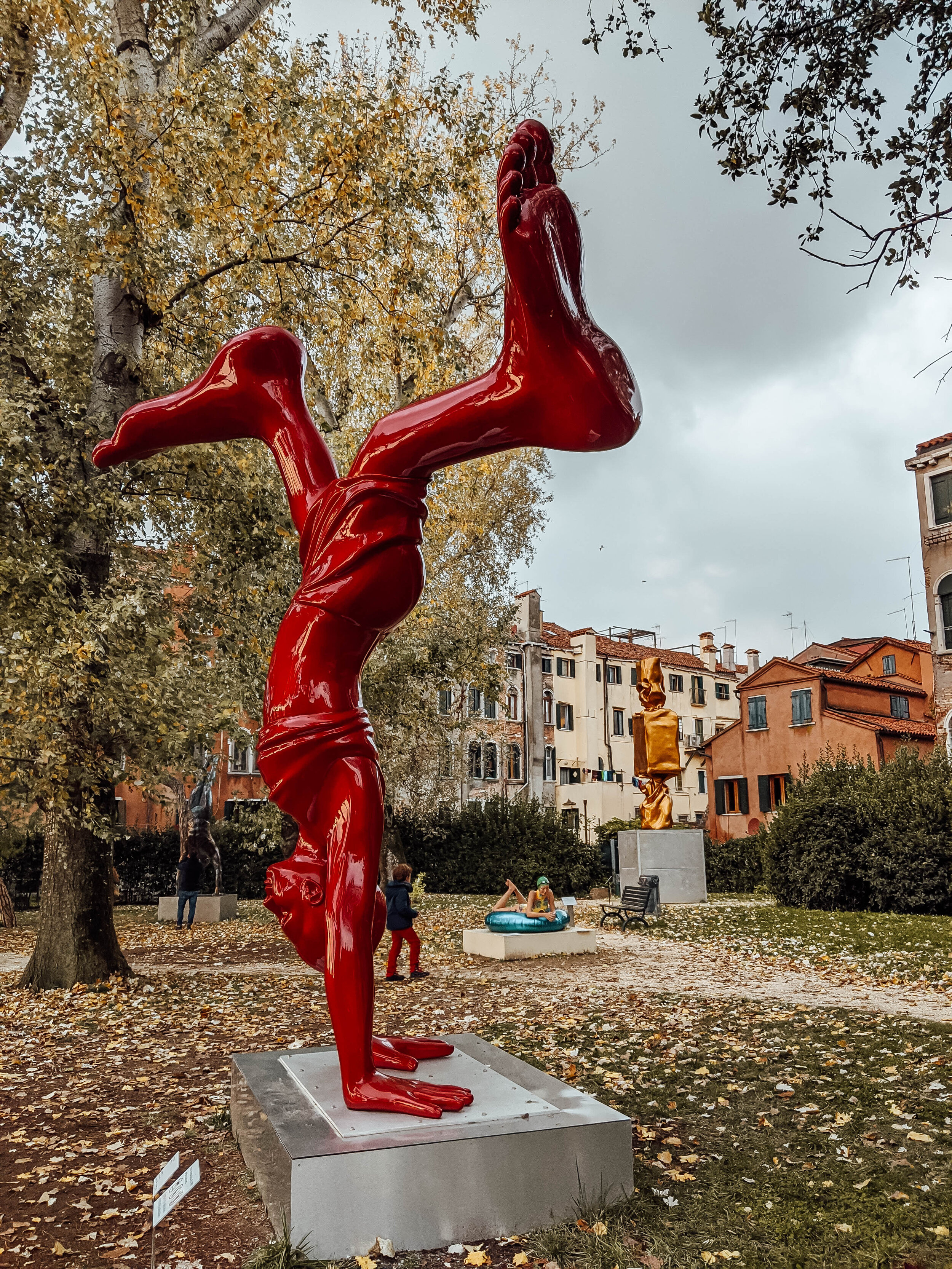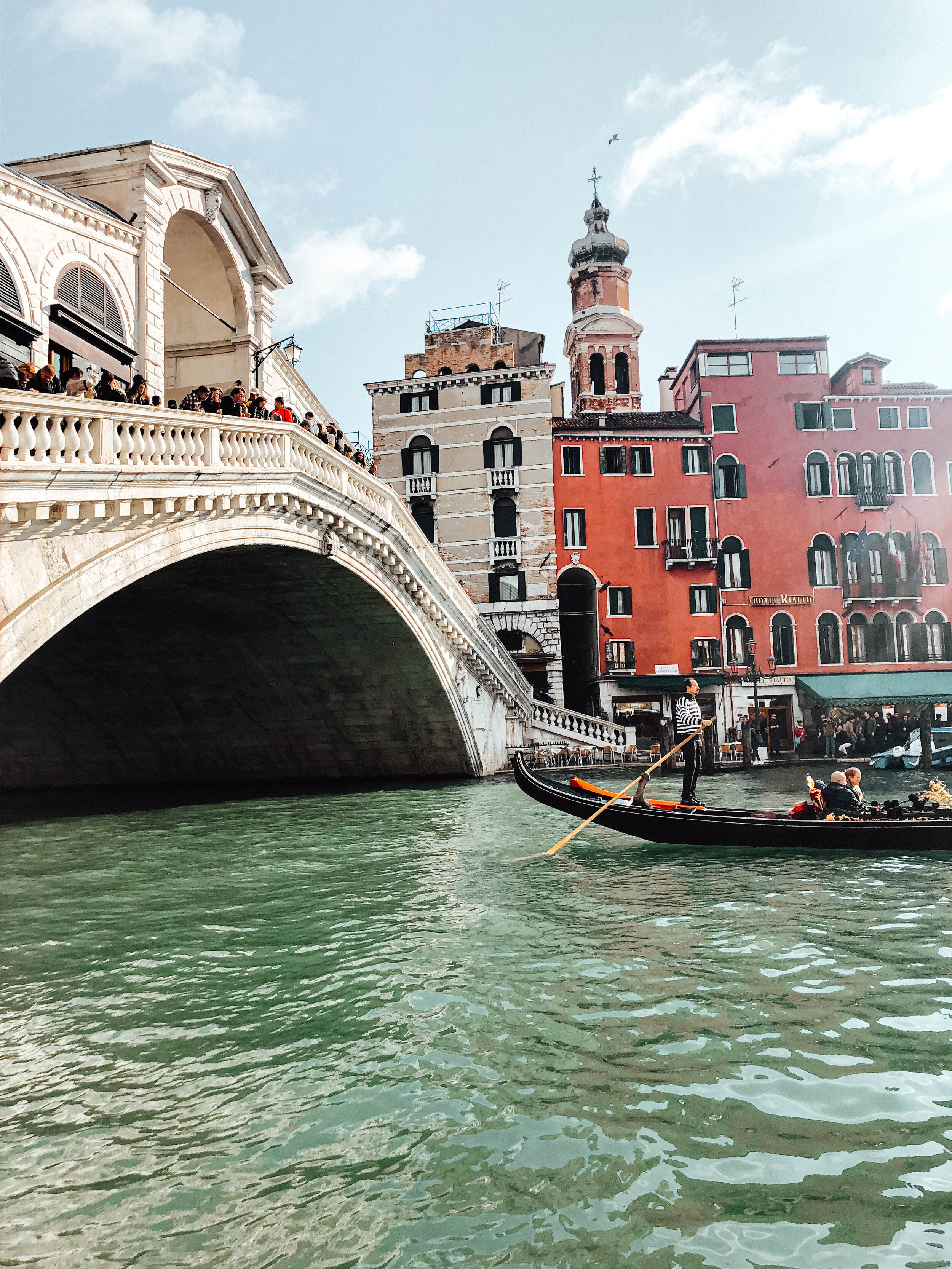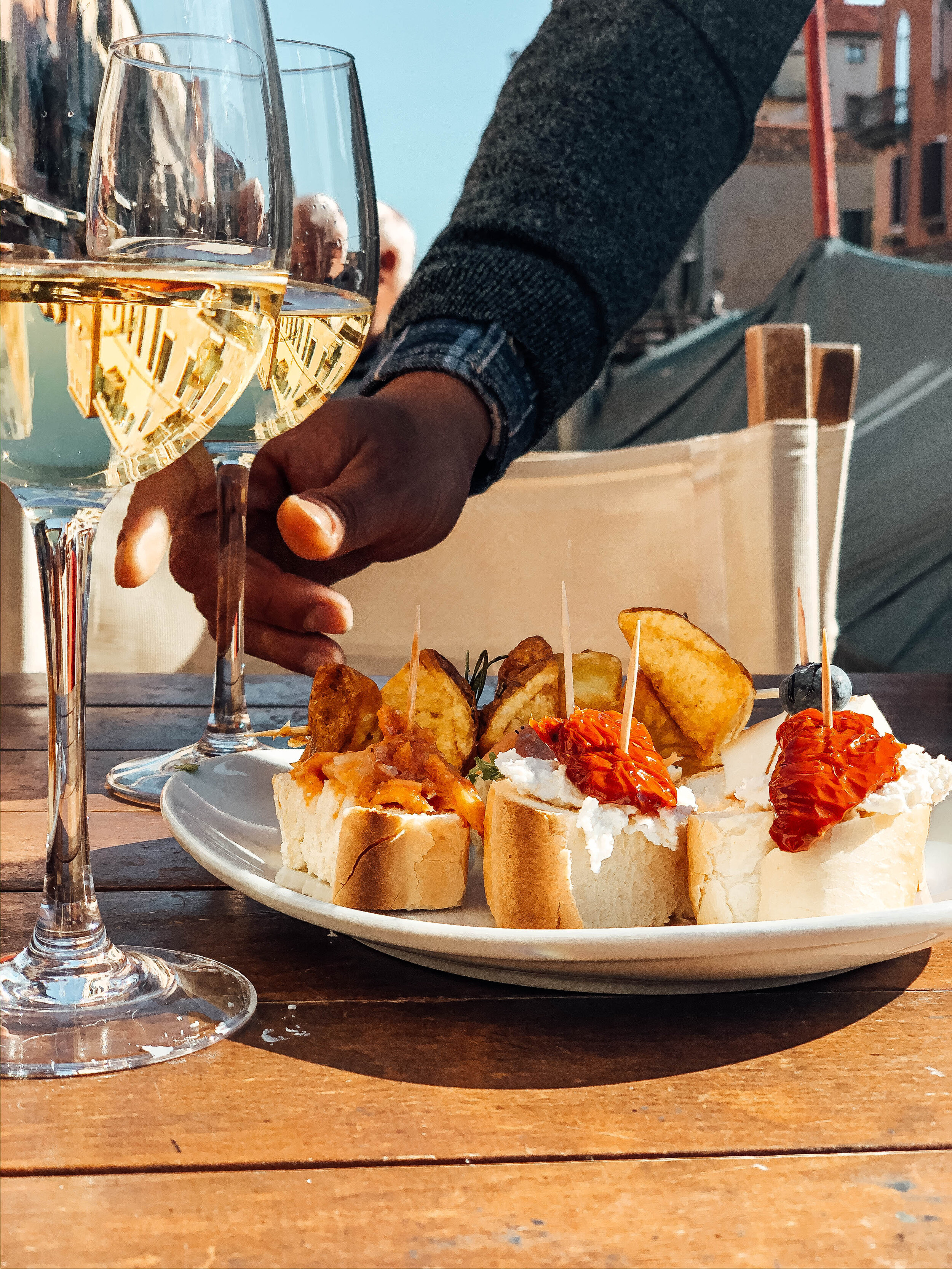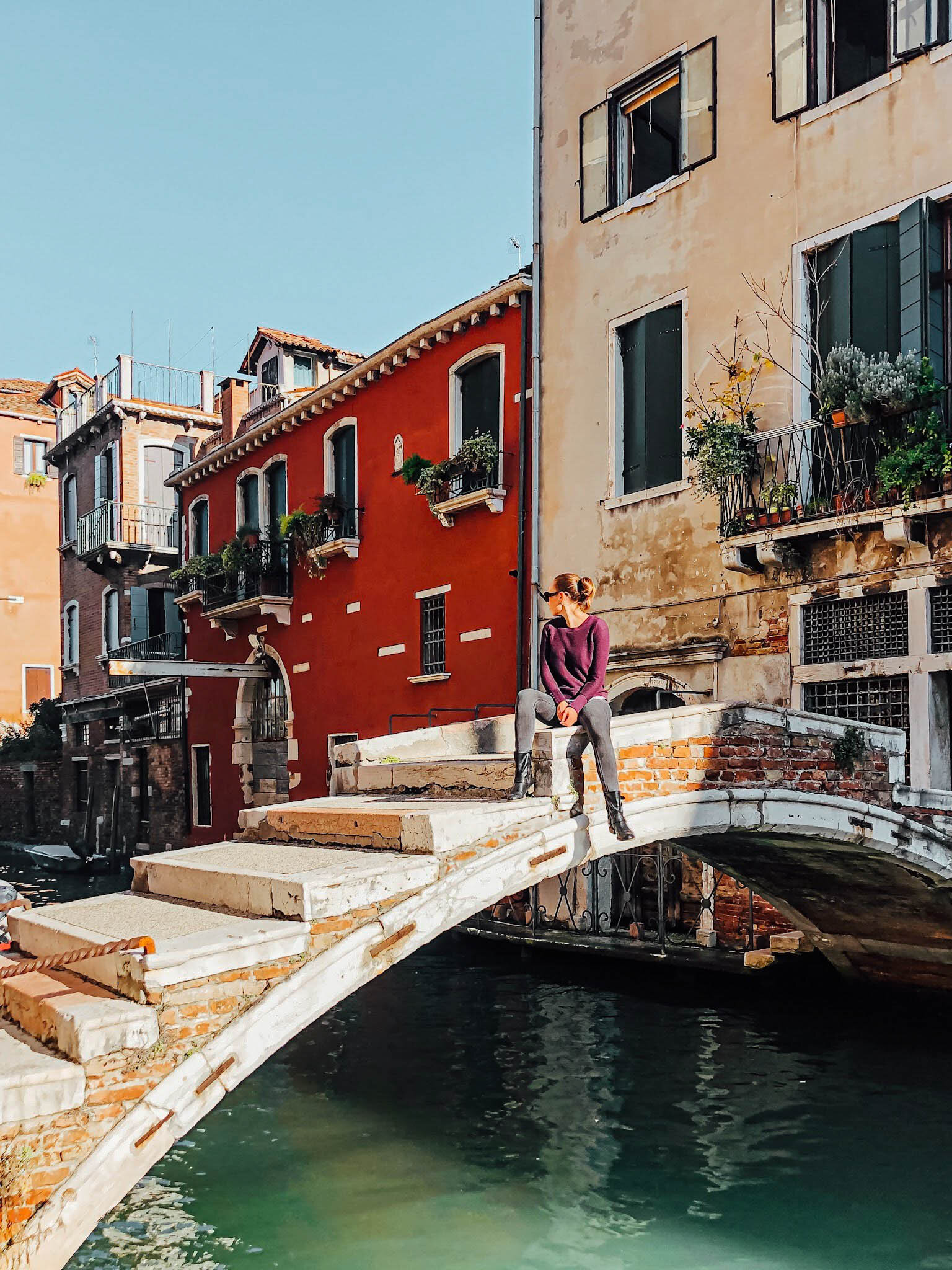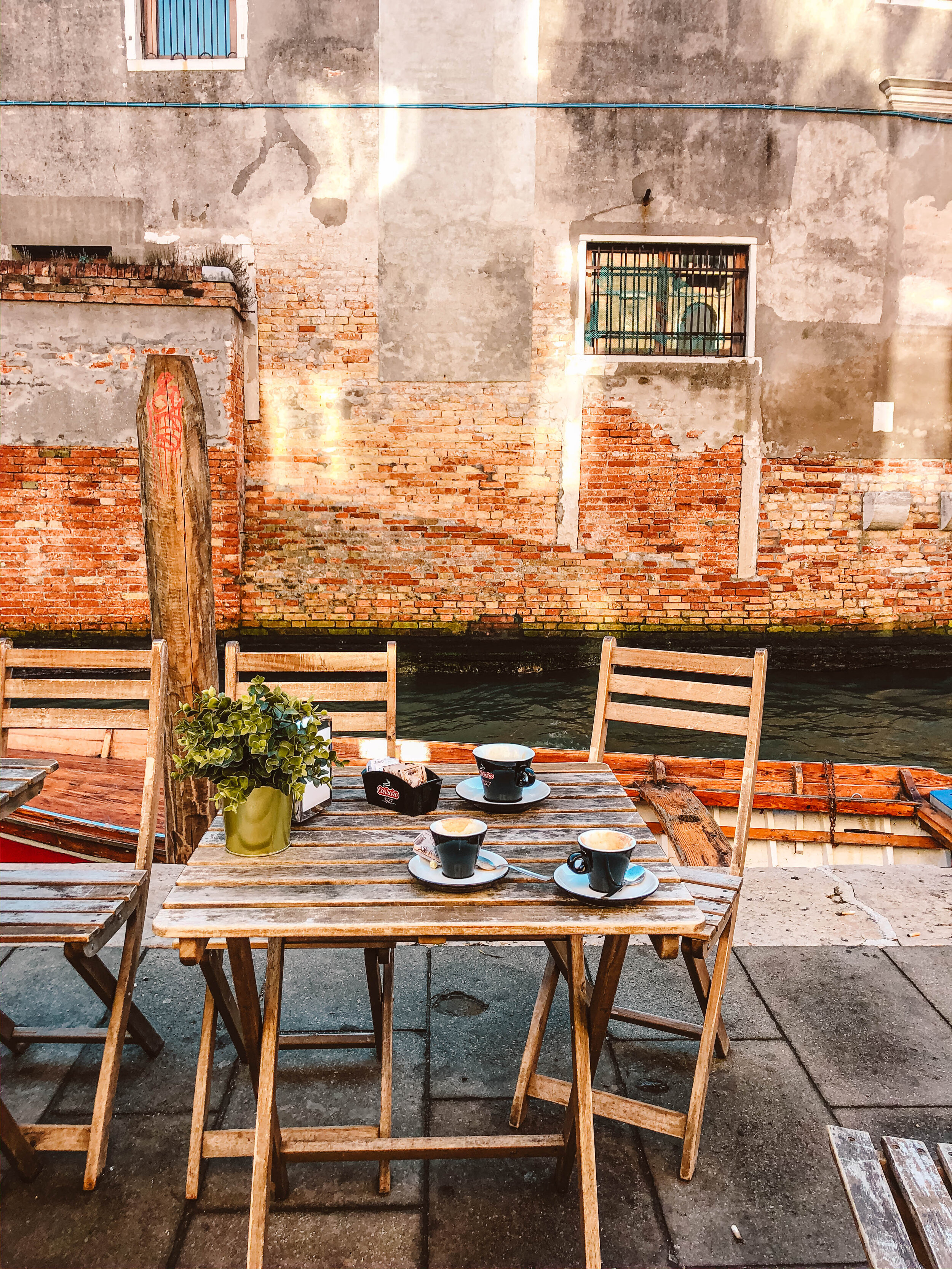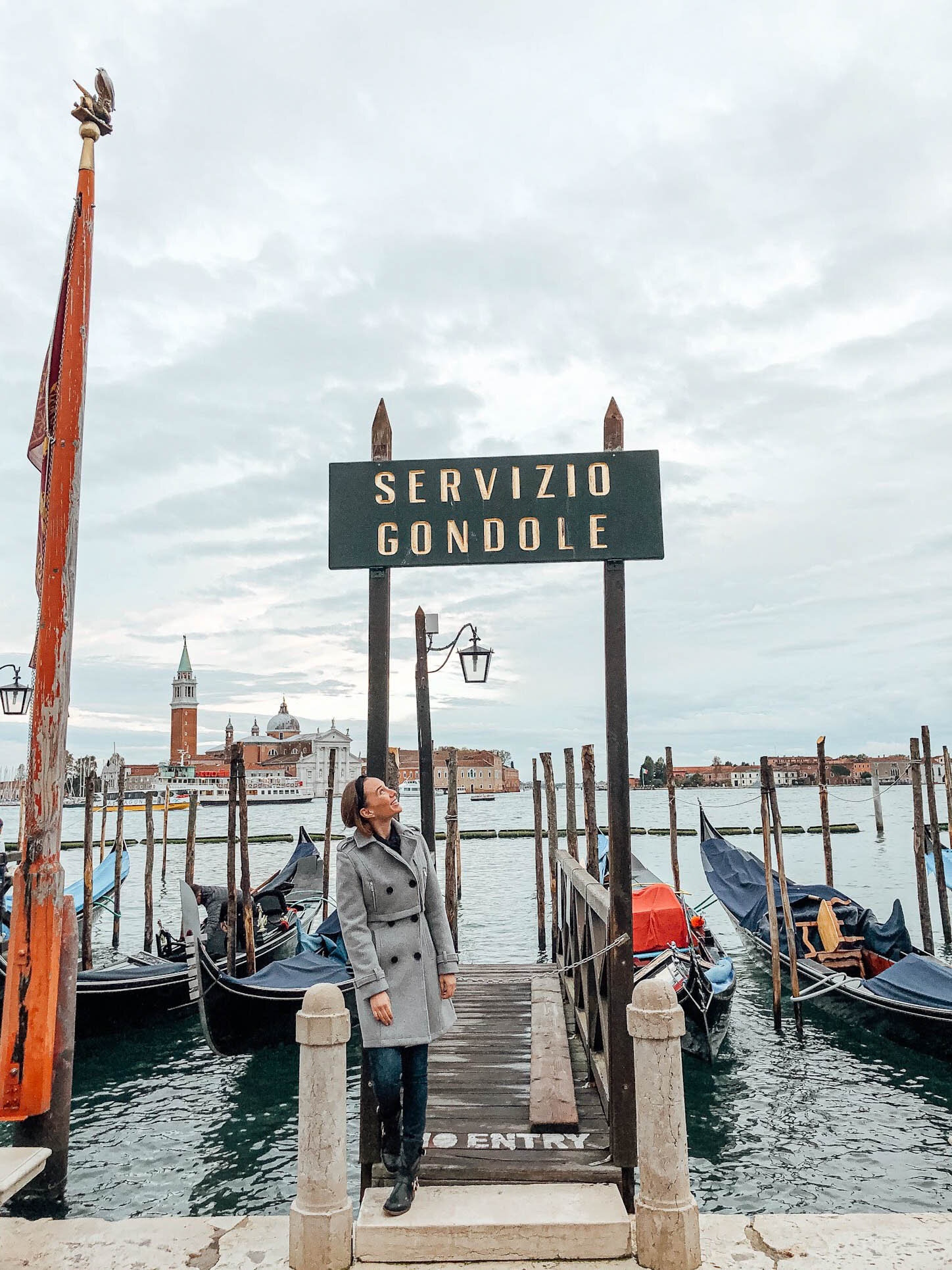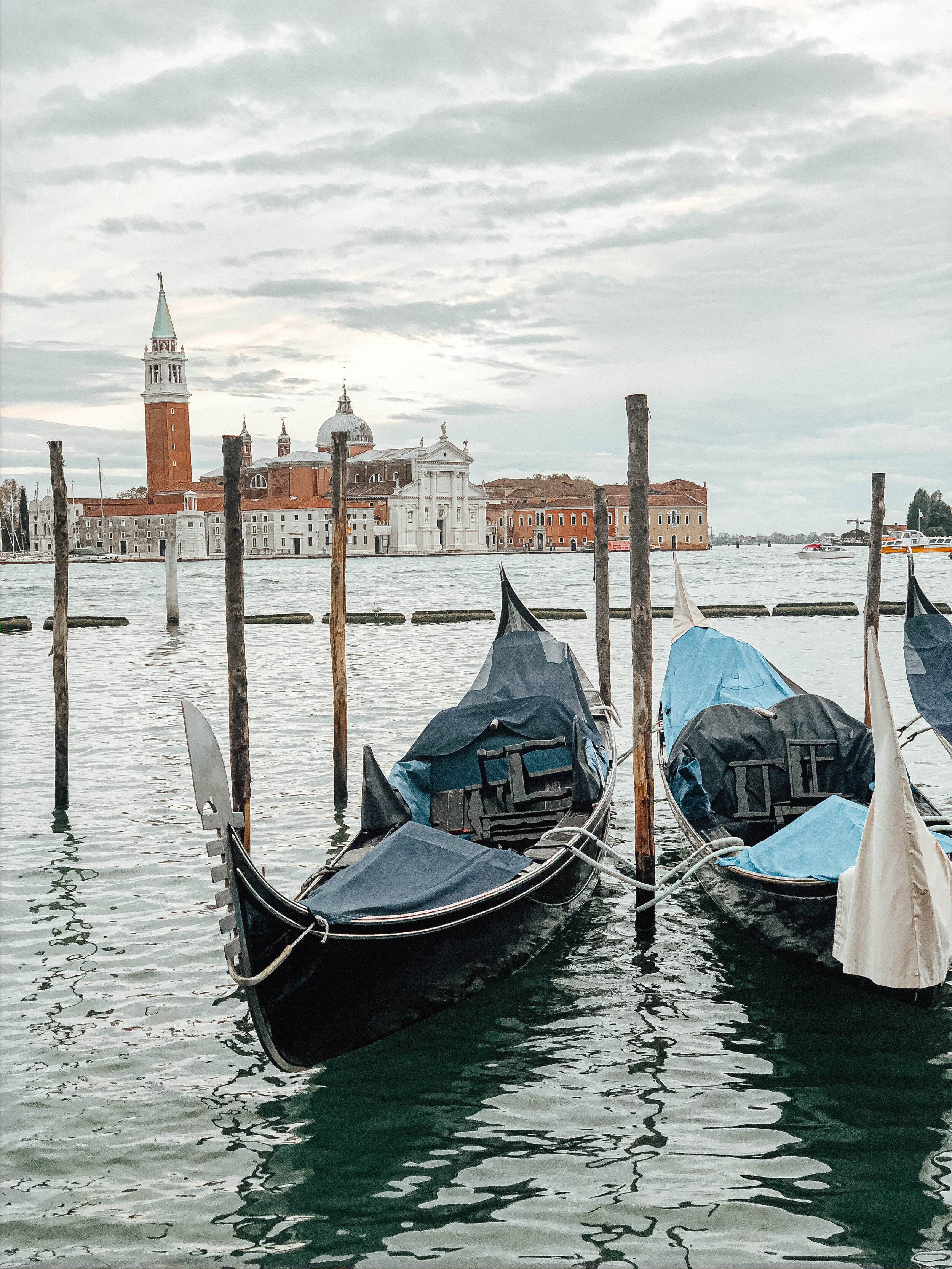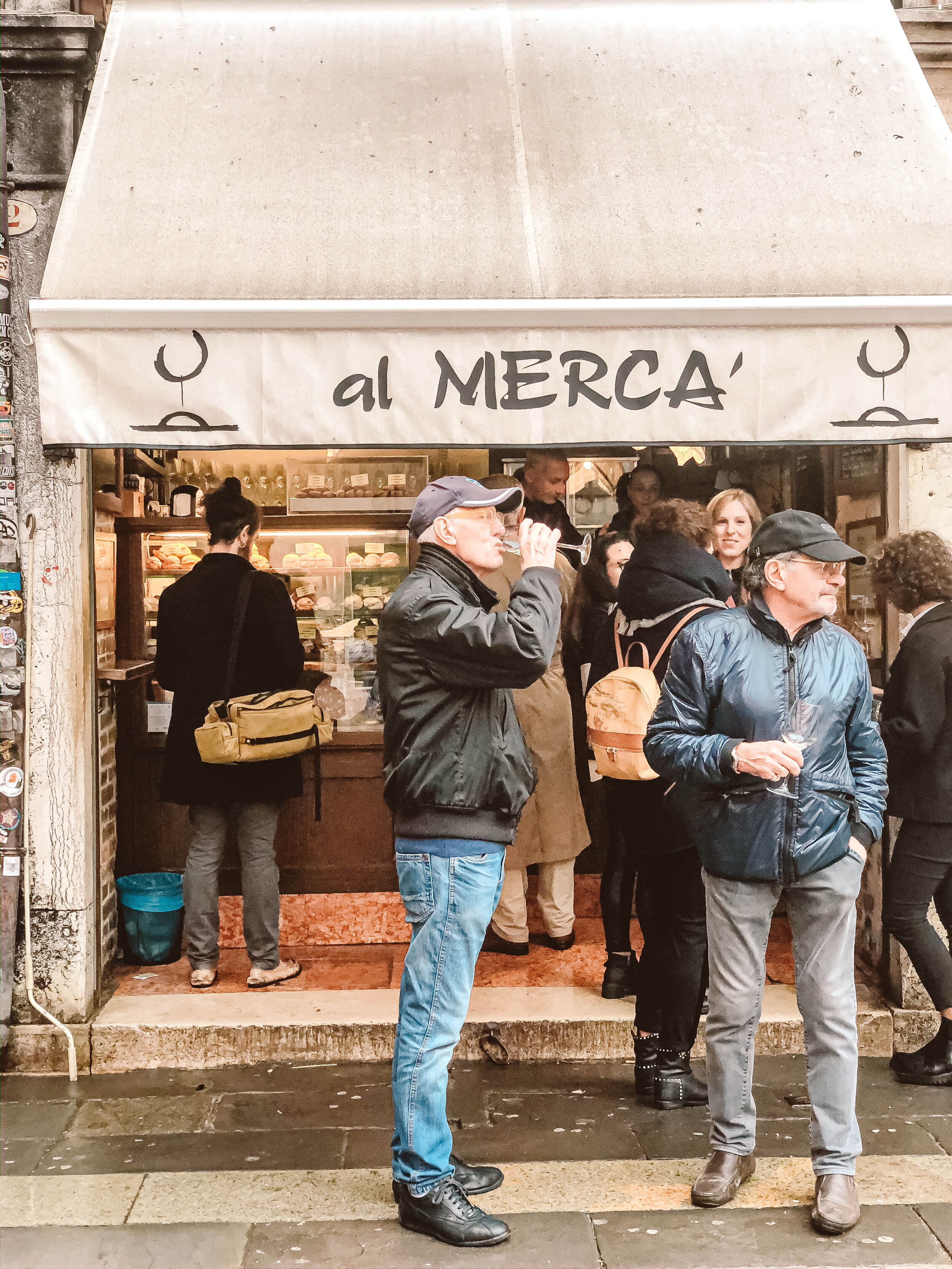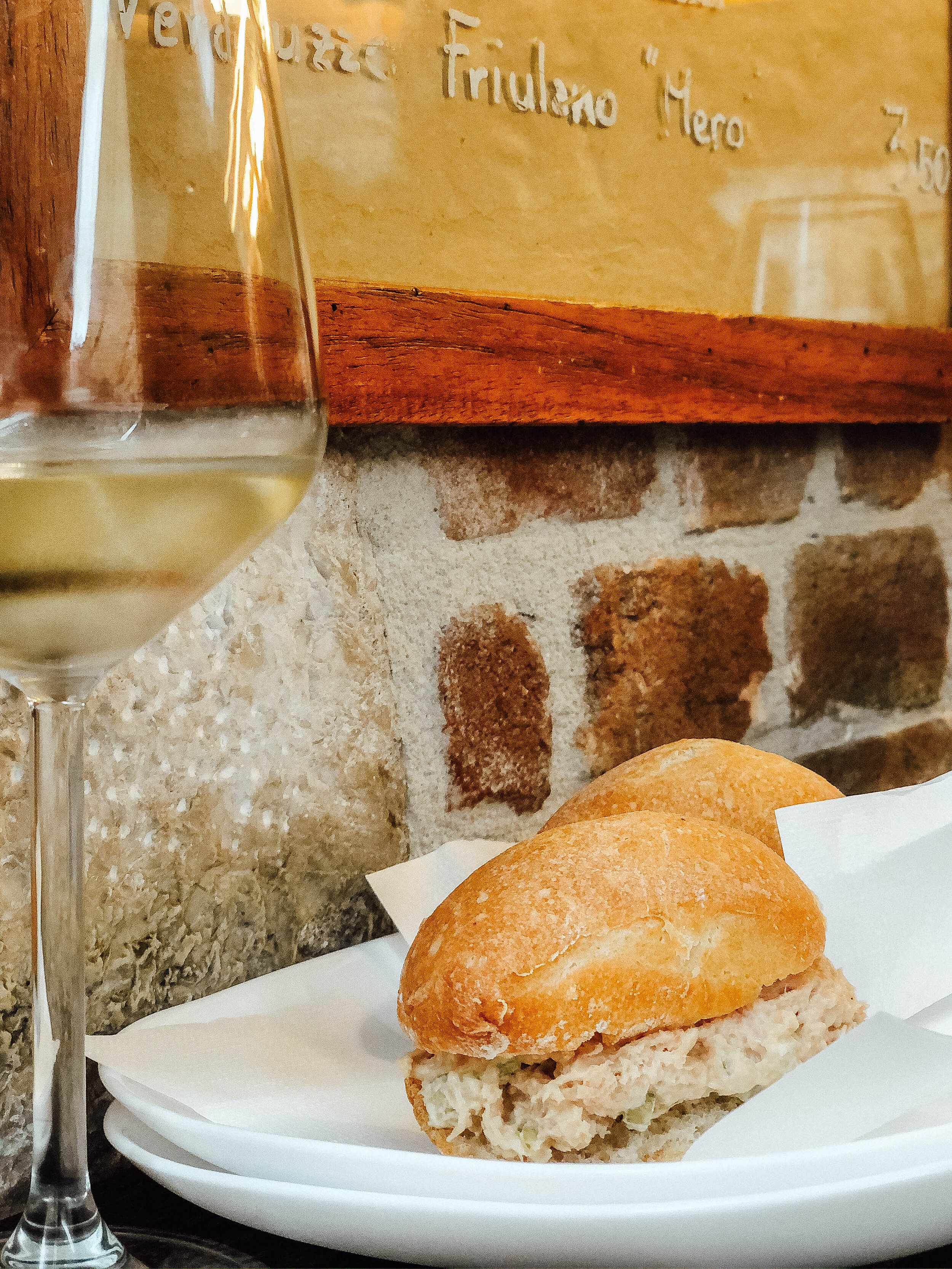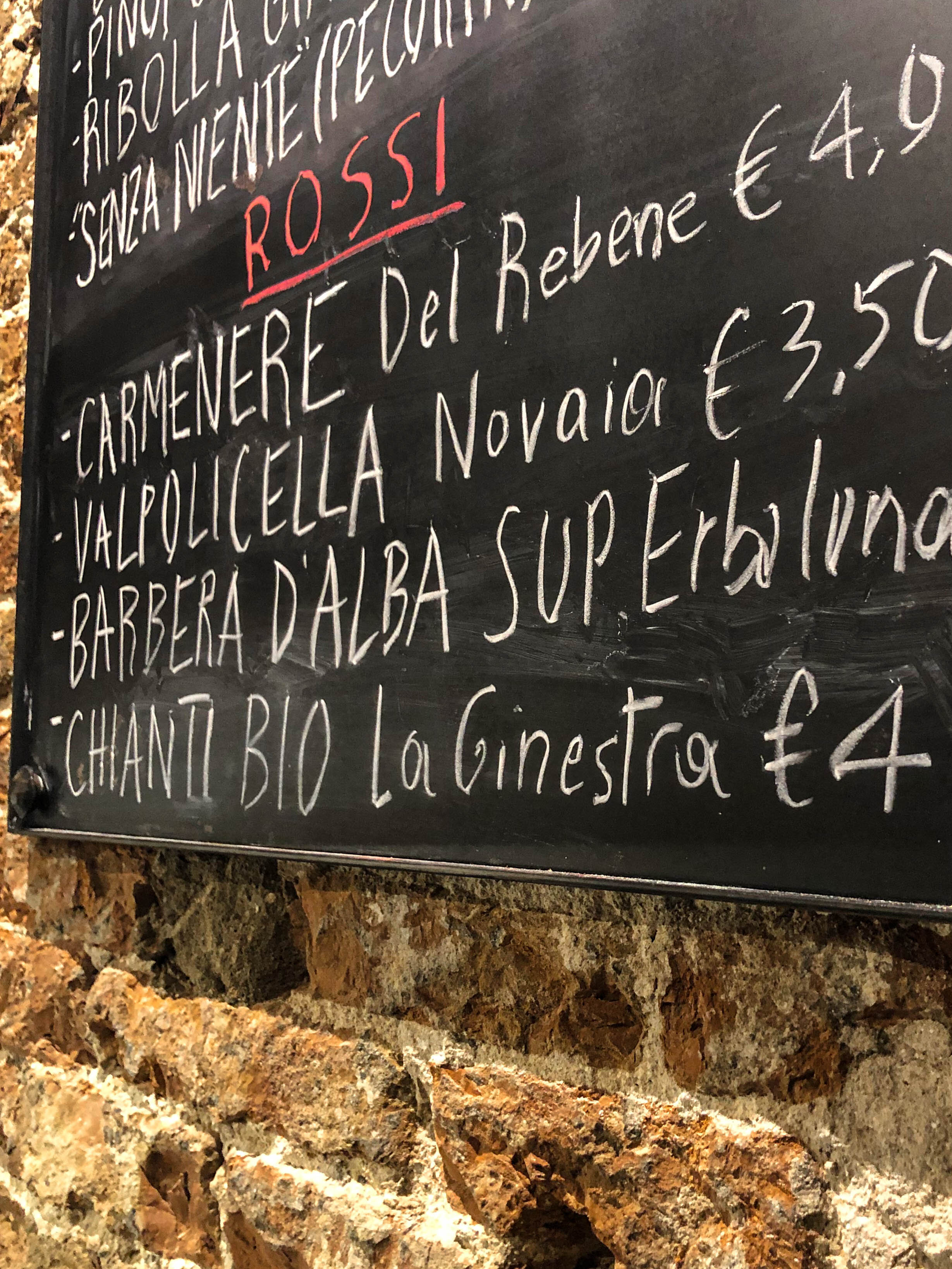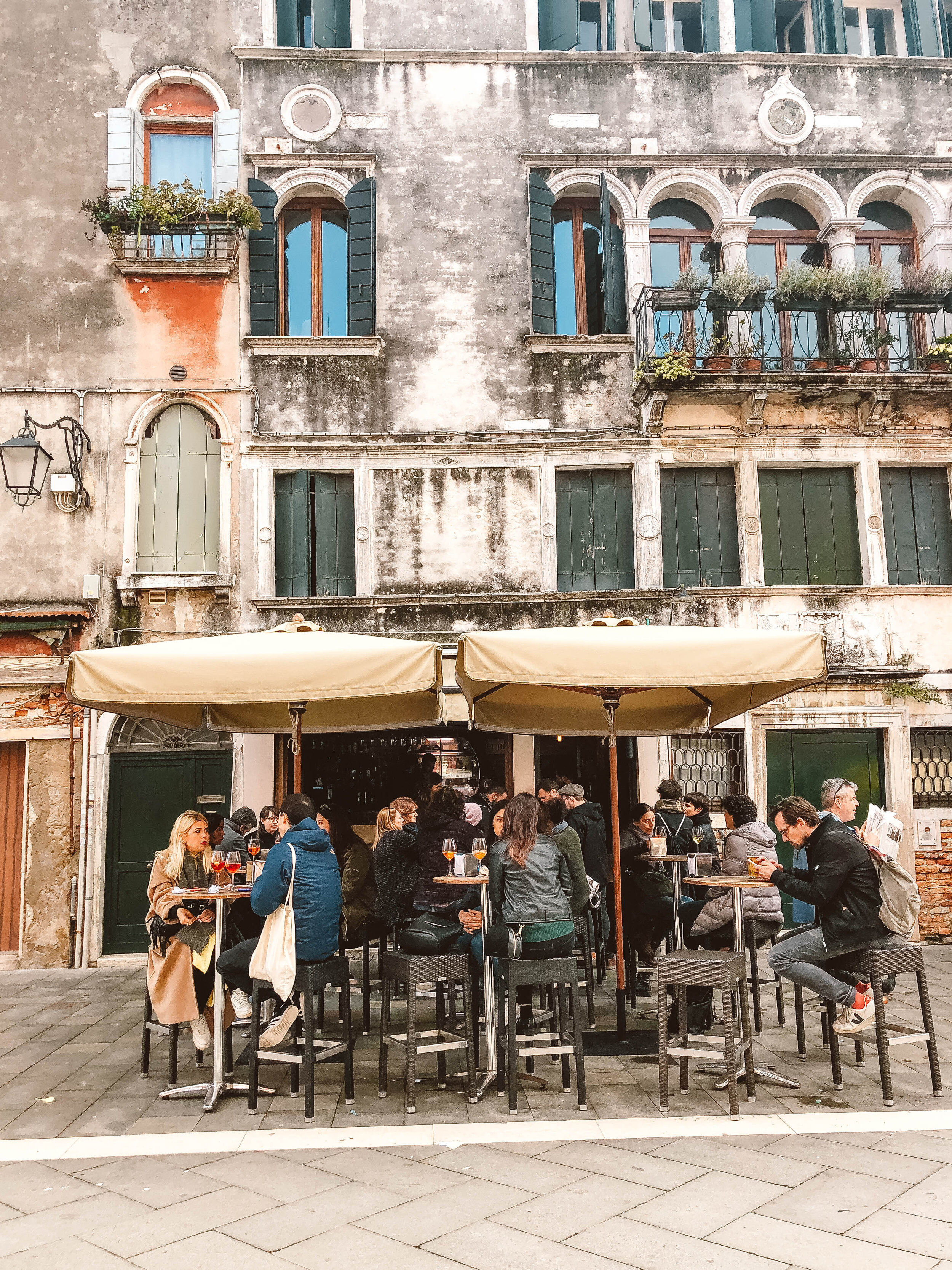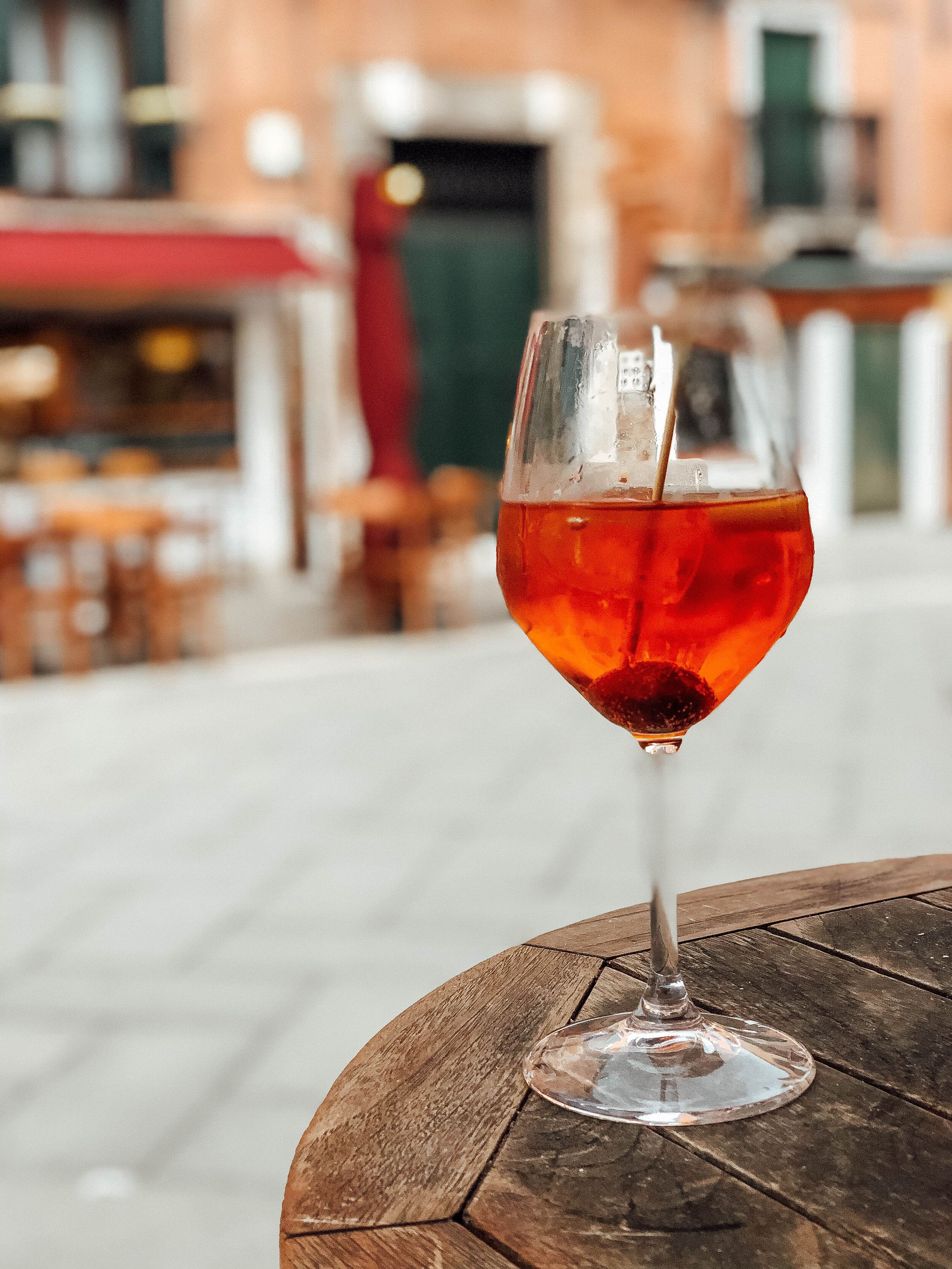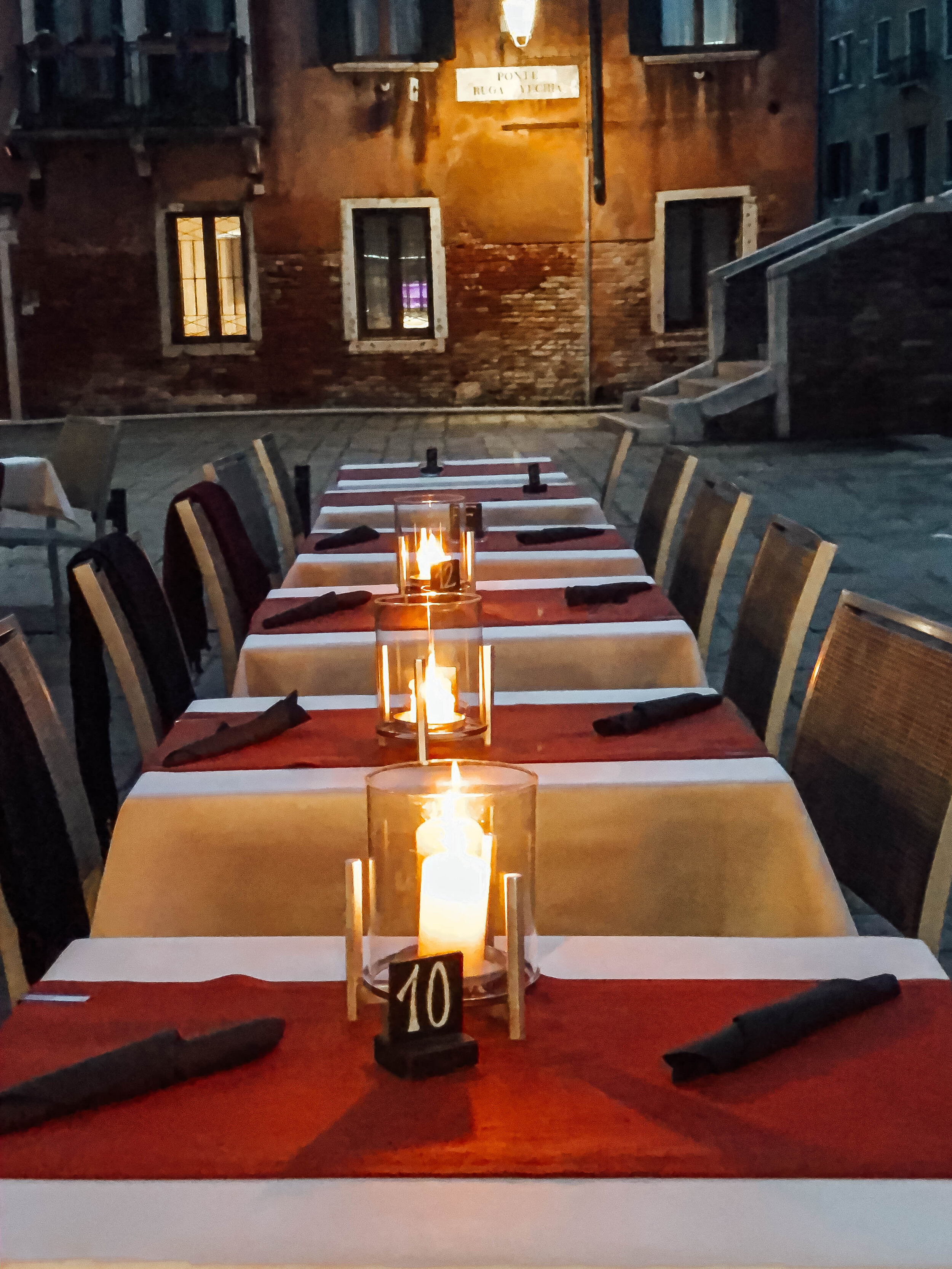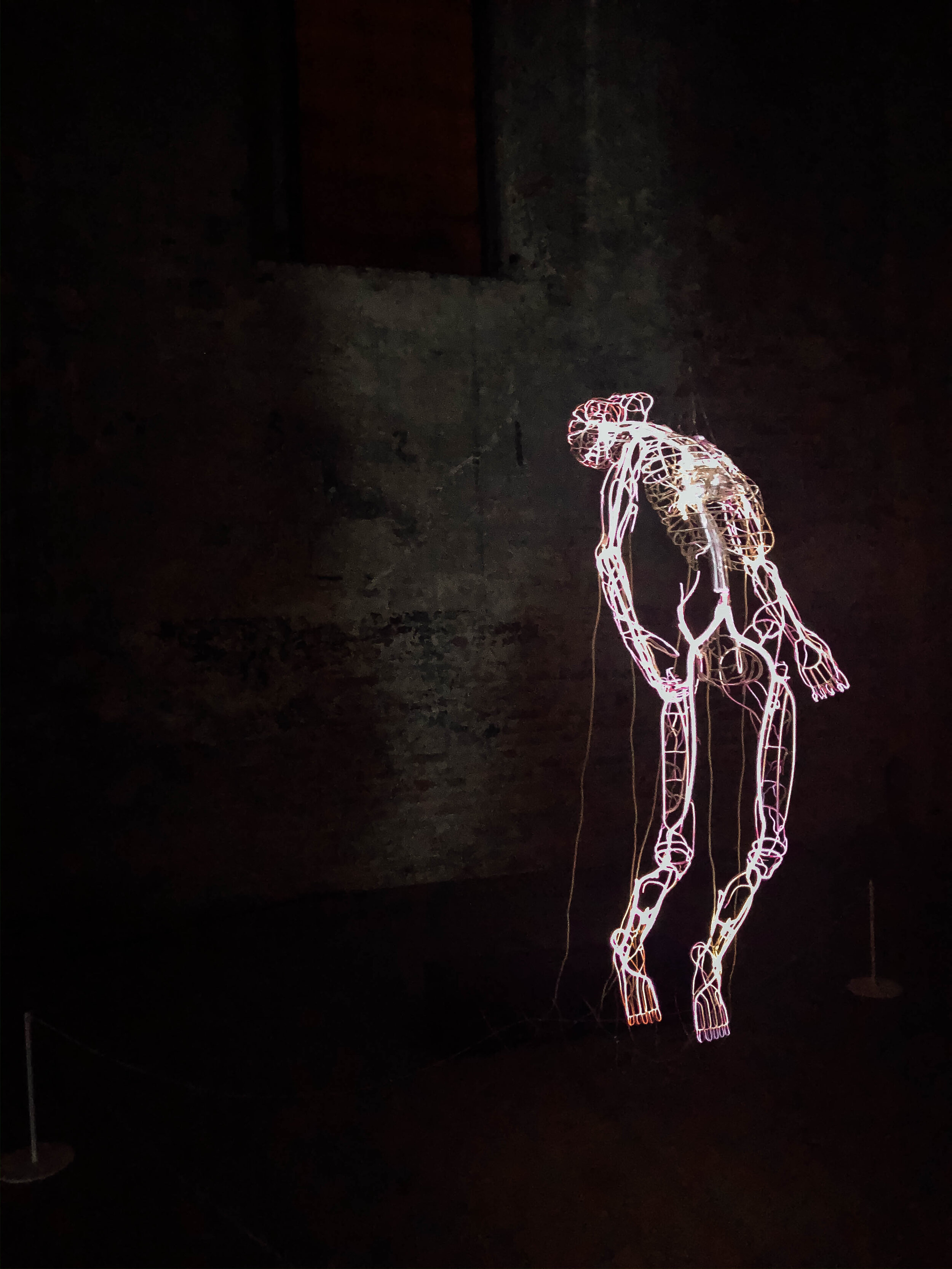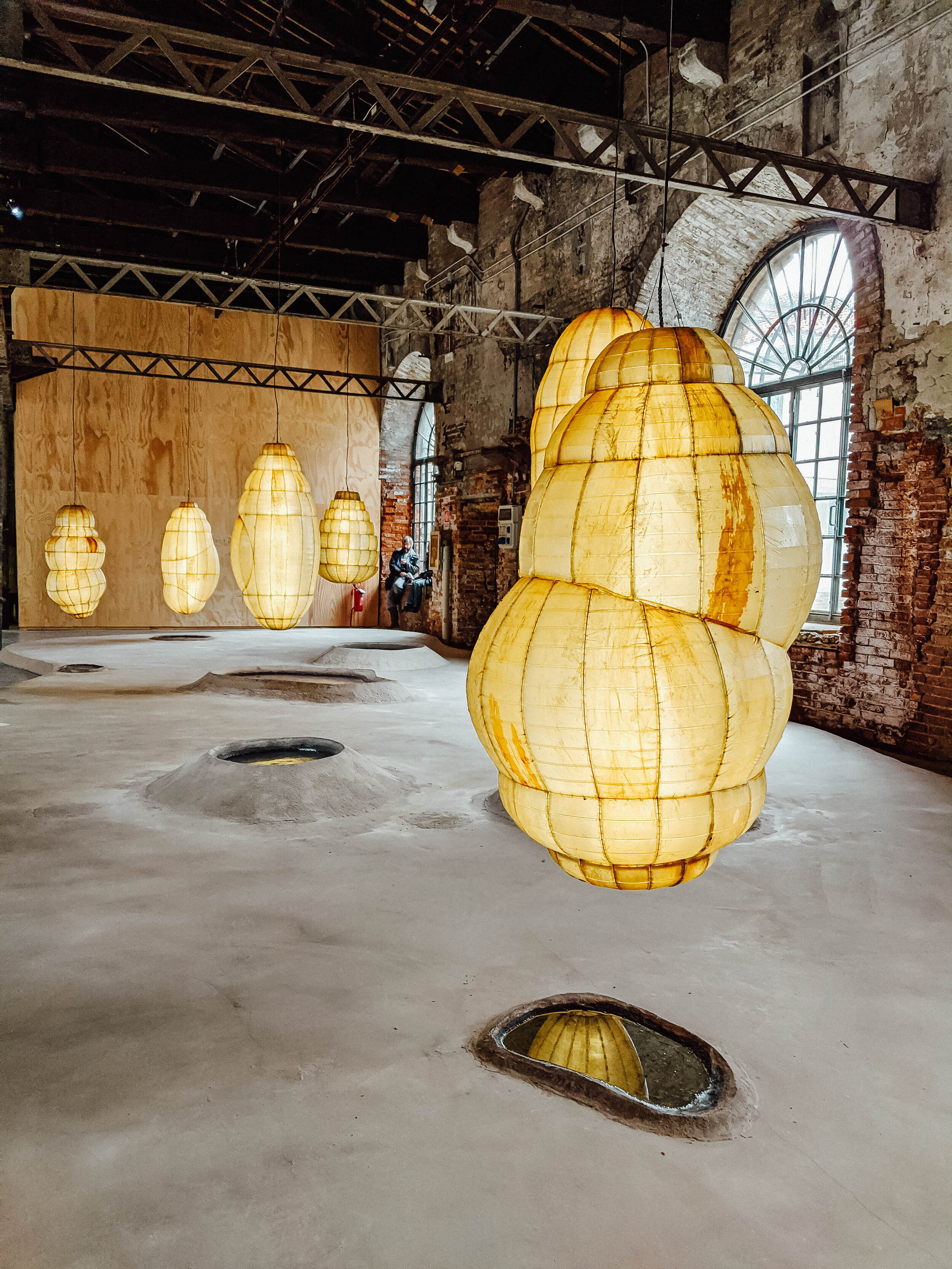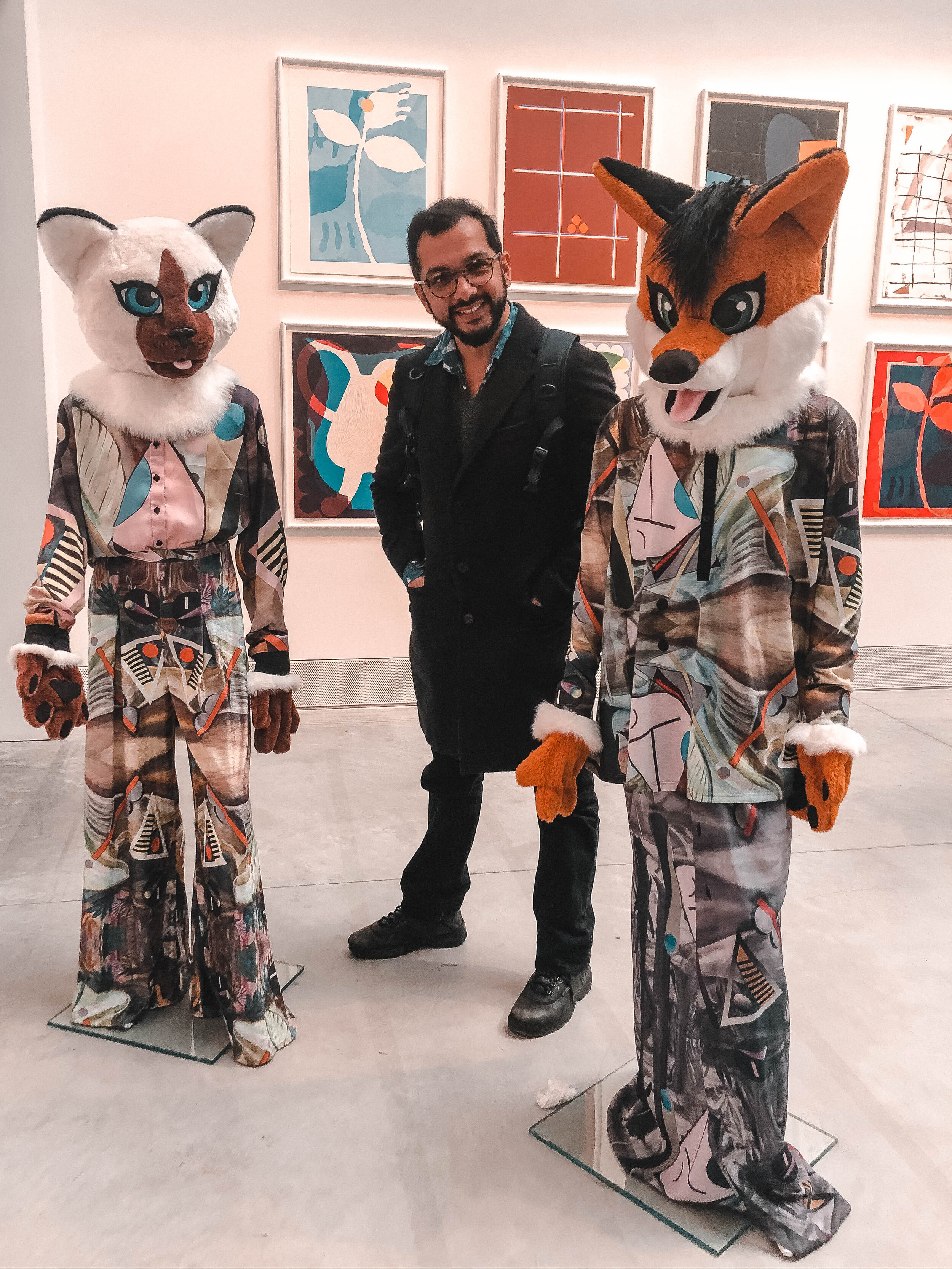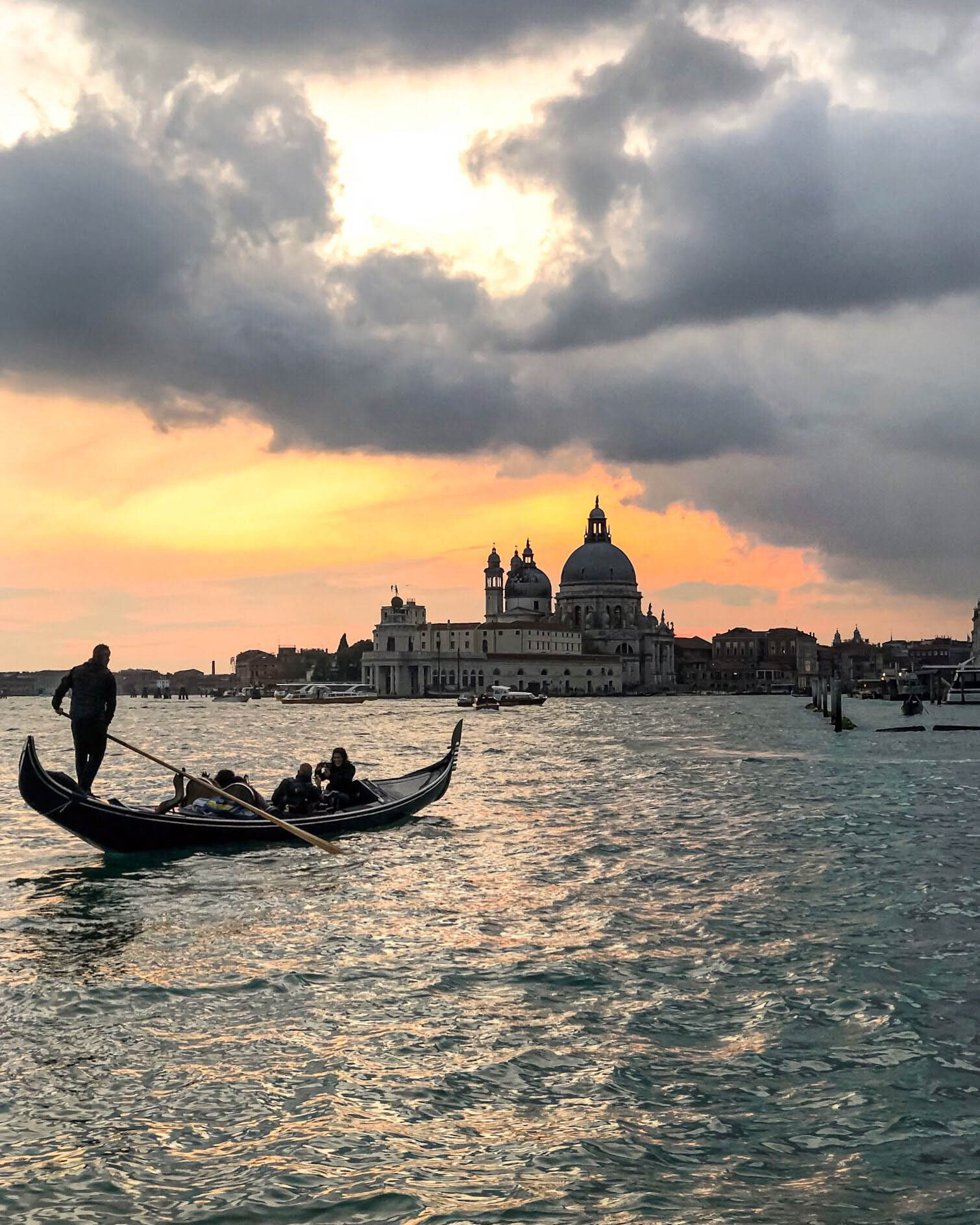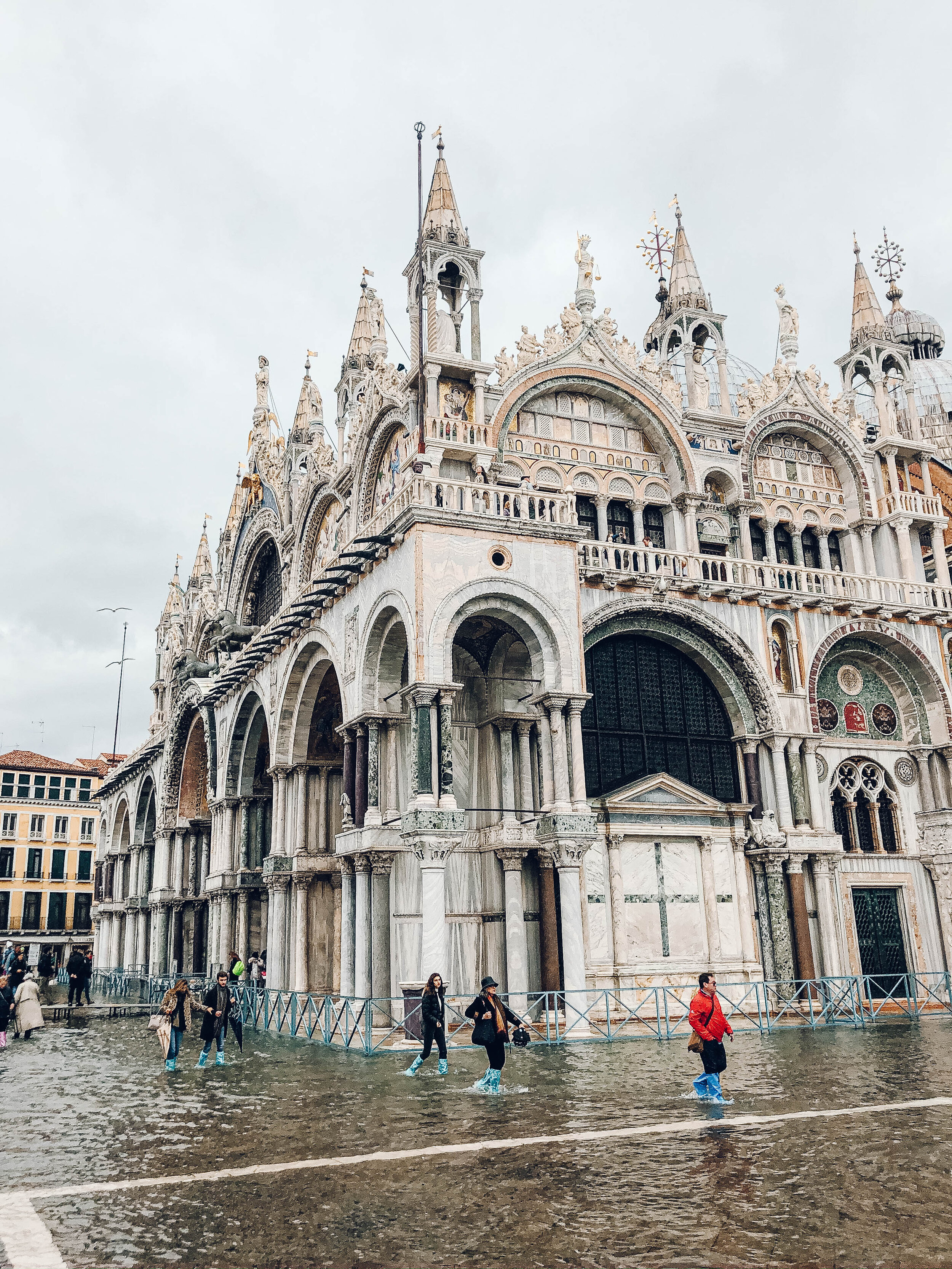The Impossible City: Venice, Italy
“To build a city where it is impossible to build a city is madness in itself, but to build there one of the most elegant and grandest of cities is the madness of genius.” -Alexander Herzen
Two main things brought us to Venice in November: first, it was last weekend of the international art festival Biennale, and second, there was a super-sale on train tickets direct from Zurich to Venice. Sold. We left Zurich Hauptbahnhof on the 9am train, and got to the city of canals by mid-afternoon.
The experience coming out of the Santa Lucia train station is surreal, almost jarring, in its contrast. Raunaq and I grabbed our backpacks and made our way through the hordes of people peeling out of the train, through the station doors and down the steps - and nearly walked right into the canal. It’s a pretty magnificent way to be welcomed into the city, and just for a second, the 10,000 other tourists all melted away.
Because it felt like all of Venice just spilled out right in front of us: the iconic gondolas gliding smoothly across the deep turquoise water, the black-and-white striped shirts of the gondoliers that compliment the red-and-white stripes on the docking poles, the Bzyantine windows and the Gothic columns and the elegant brickwork and the weathered paint, the marble bridges. The feeling of ancient, slow craftsmanship was almost palpable.
And then just as quickly, another tourist bumping into me brought me back to reality. But Venice really does make a grand entrance.
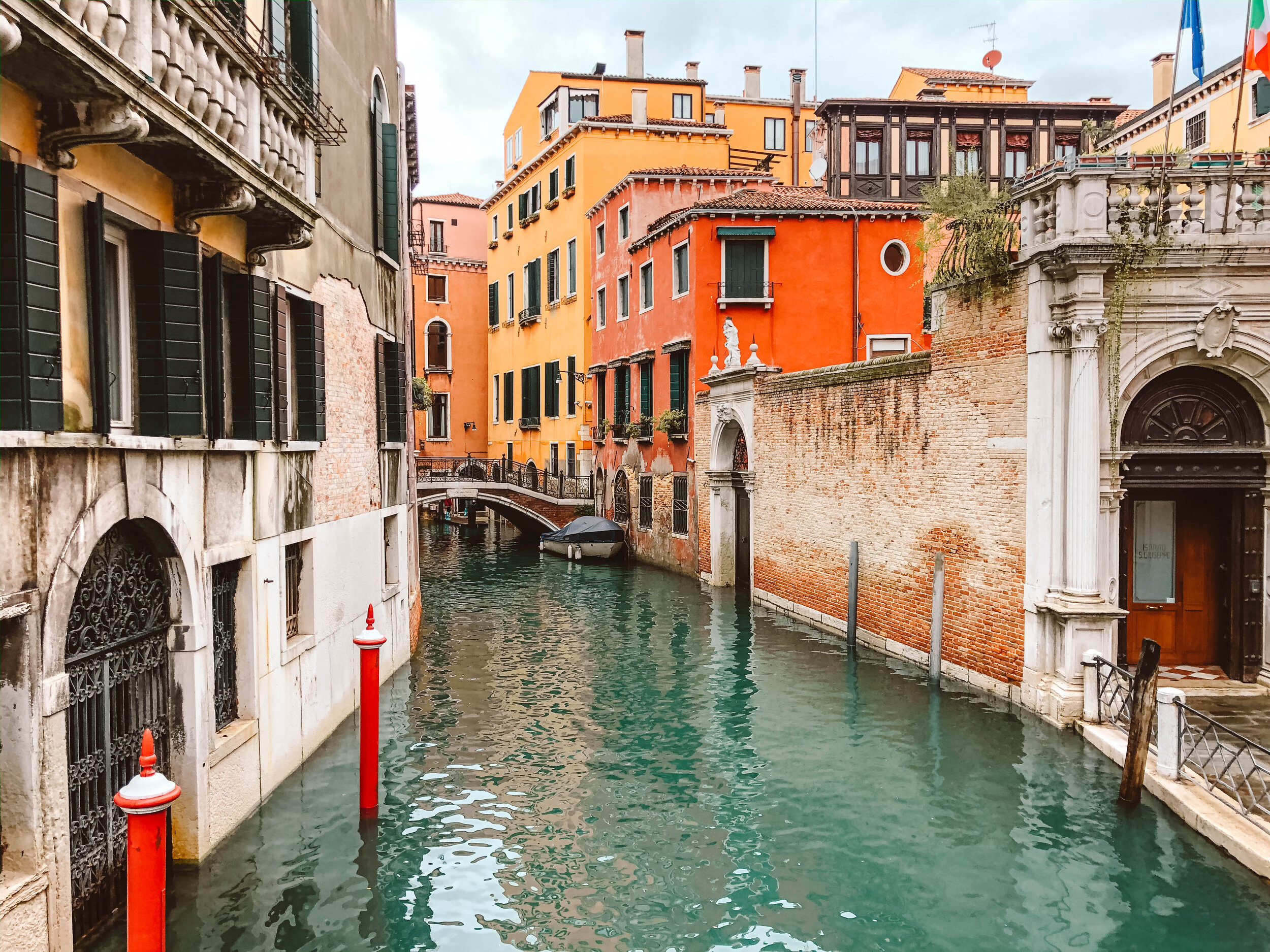
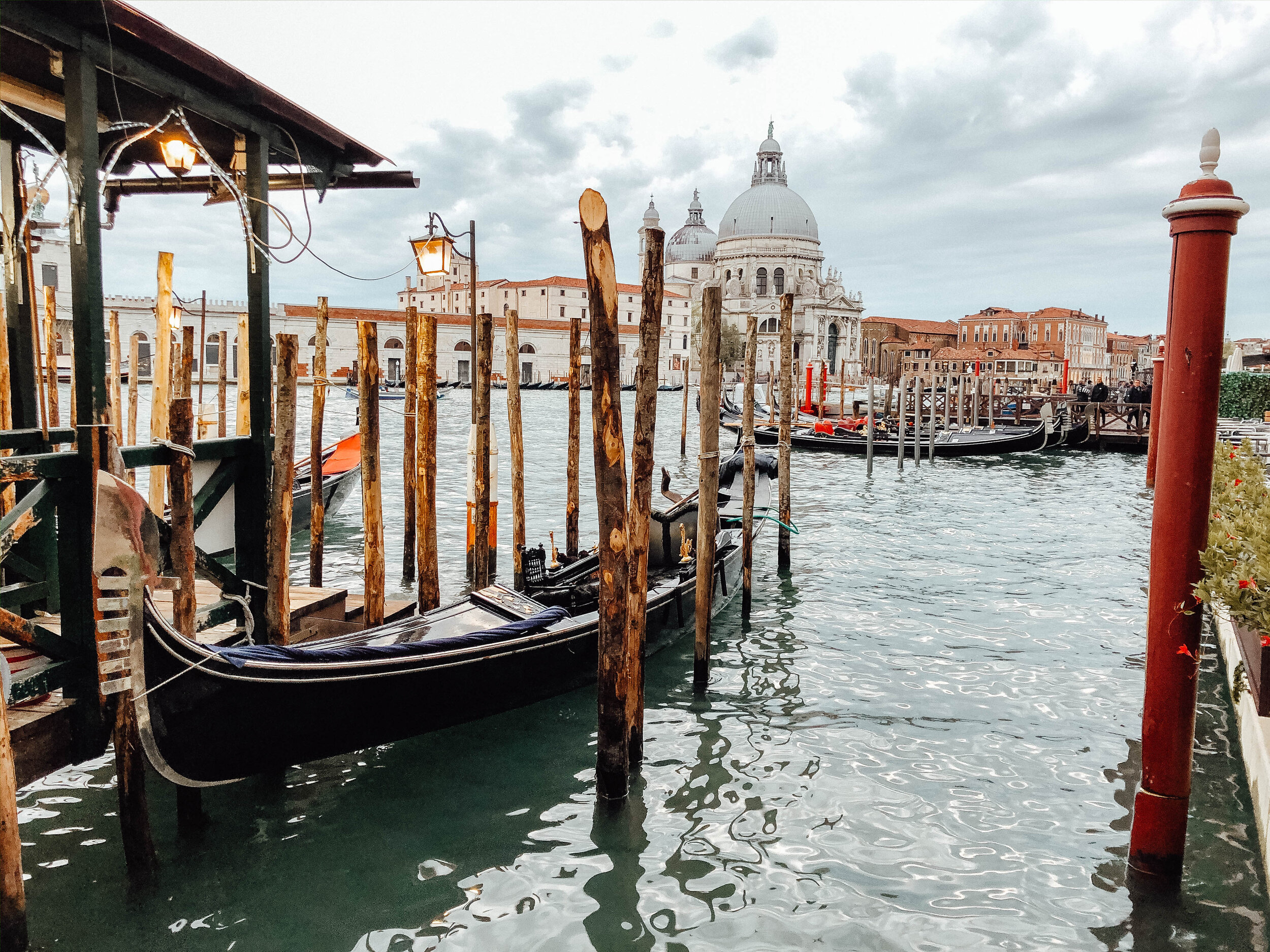
Our AirBnB host was waiting for us, and he provided us with two key things for our trip: 1. A tip to ‘do as the Venetians do’ and eat at the local bacari (more on that below), and 2. Plastic waders. Because it was the acqua alta (high water) season, and the next day, the tides would rise and flood the streets.
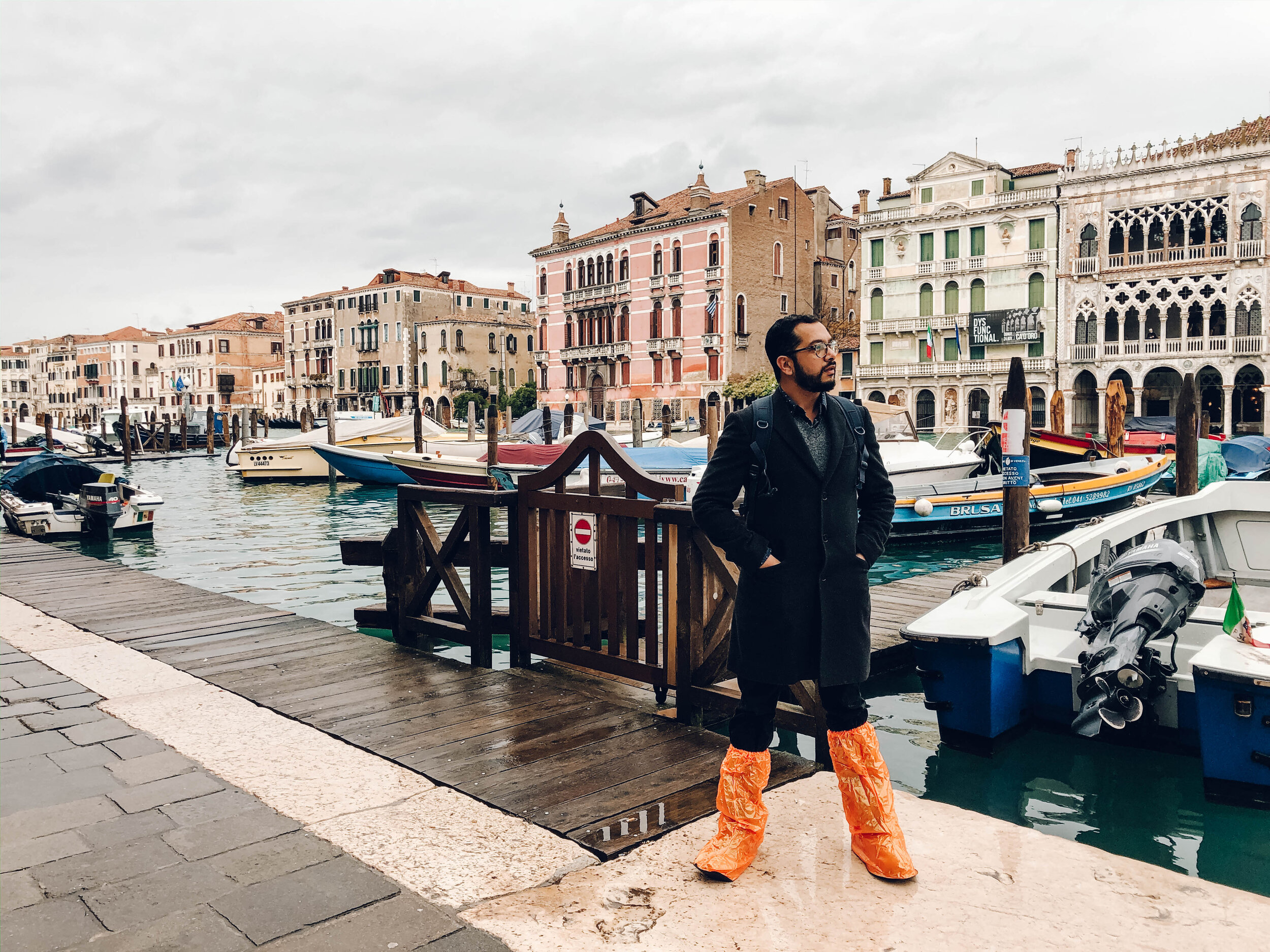

I am a bit notorious for not thoroughly researching a city before we visit. Raunaq will put together a list of restaurants and bars, but I generally do most of my research after we return home, eager to find out more about where we just were (yes, this is backwards, and yes, I’m working on it!). Ergo, I definitely had not anticipated this flooding phenomenon. Our host gave us each plastic, neon, knee-high waders (fashion!) to pull on over our shoes, and assured us that from 9am to 11am, and again in the afternoon - we would need them. And need them we did.

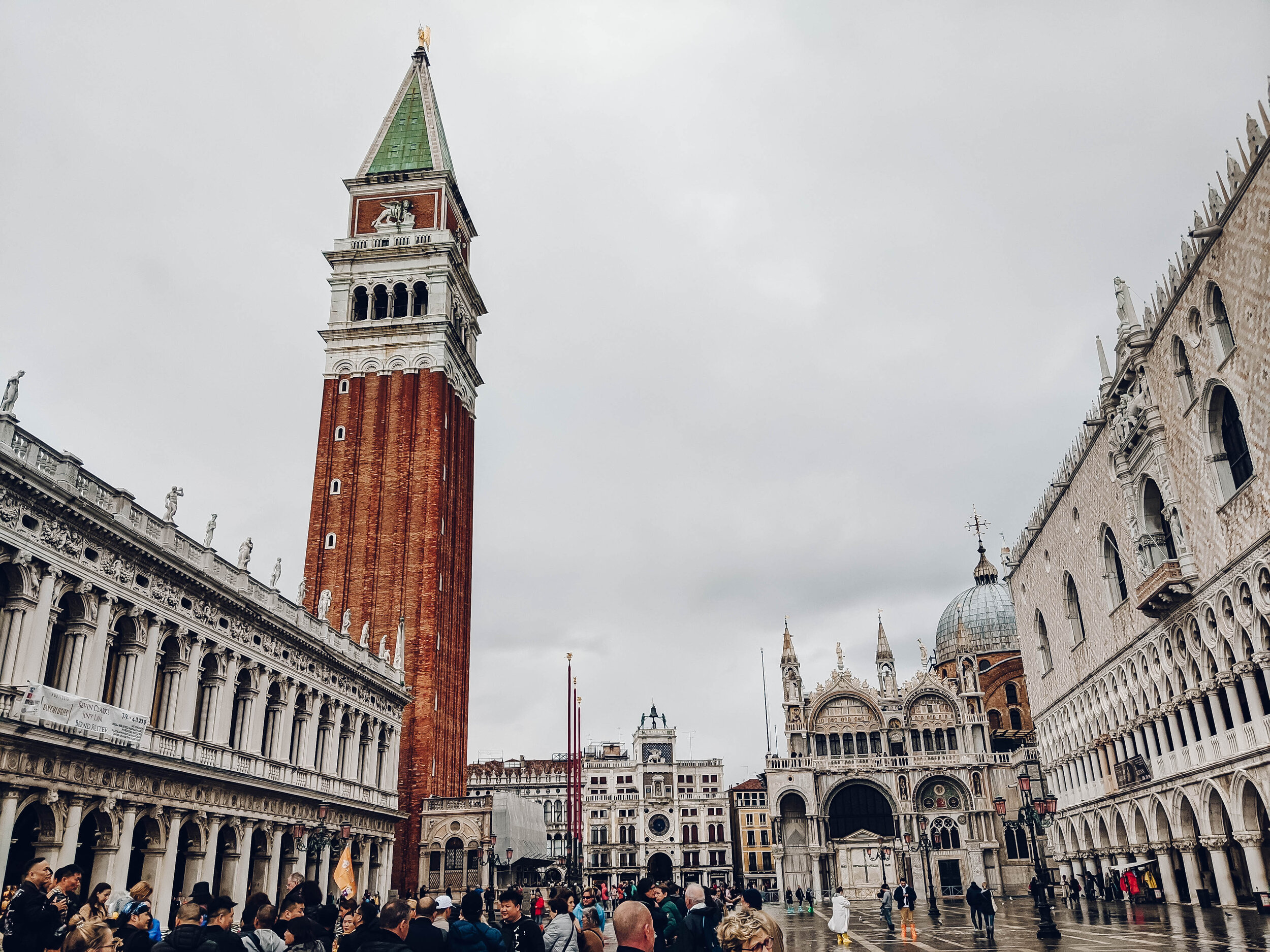

Our apartment was located right on a canal, and was covered by nearly a foot of water by morning. Seeing St. Mark’s square (Piazza San Marco), a square we were just in the night before, covered in water was a sight to behold. I wasn’t too disturbed by the flooding at this point, assured as I was by our AirBnB host and the Internet that the acqua alta was a somewhat regular occurrence. The city is certainly prepared for it. Platformed walkways suddenly materialized throughout the main arteries of town, criss-crossing plazas and snaking through the wider alleyways. And as the tides receded, the platforms disappear just as quickly. It was actually pretty fun to walk through the water in the waders - that is, until I got a hole in the bottom of one of mine. When good intentions fail.
Exploring Venice
Venice, even amid all its glory, has a reputation for being one large tourist trap. We went during the low-season, in mid-November, so I can’t speak for what it is like in the height of summer. During our weekend, the areas around the Grand Canal, Rialto Bridge and St. Mark’s Basilica were thronged with people. But it doesn’t have to be this way! It was so easy to walk five minutes in literally any direction, down any alley, and find yourself in a quiet little piazza. So get lost. Visit those main areas once, because they are beautiful (the Basilica San Marco is particularly striking, not just with its opulent gold details and dramatic blend of architectural styles, but fascinating history), but there is so much more of Venice to explore.
The great news is that you don’t even really have to try to get lost - because the city is an absolute maze. We got so utterly turned around from all the criss-crossing canals and bridges and streets that more often than not abruptly dead-end at the water's edge. Once while we were sitting at a cafe, we watched a girl walk back and forth three separate times, looking all the more puzzled with each circle. Google Maps isn’t much help, so look for landmarks to orient yourself (I could always tell we were near our apartment when we passed through a certain plaza with a minimart), but beyond that - just remember it’s the journey, not the destination. And what a beautiful journey it is through Venice’s streets. All the different types of architecture are vibrant and unique, revealing the global history of the city. My very favorite type of buildings were the ones with the ornate, three-leaf trilobate windows. They are a signature of the distinctive “Venetian Gothic” style, and seem like a literal window into Venice’s east-meets-west story.
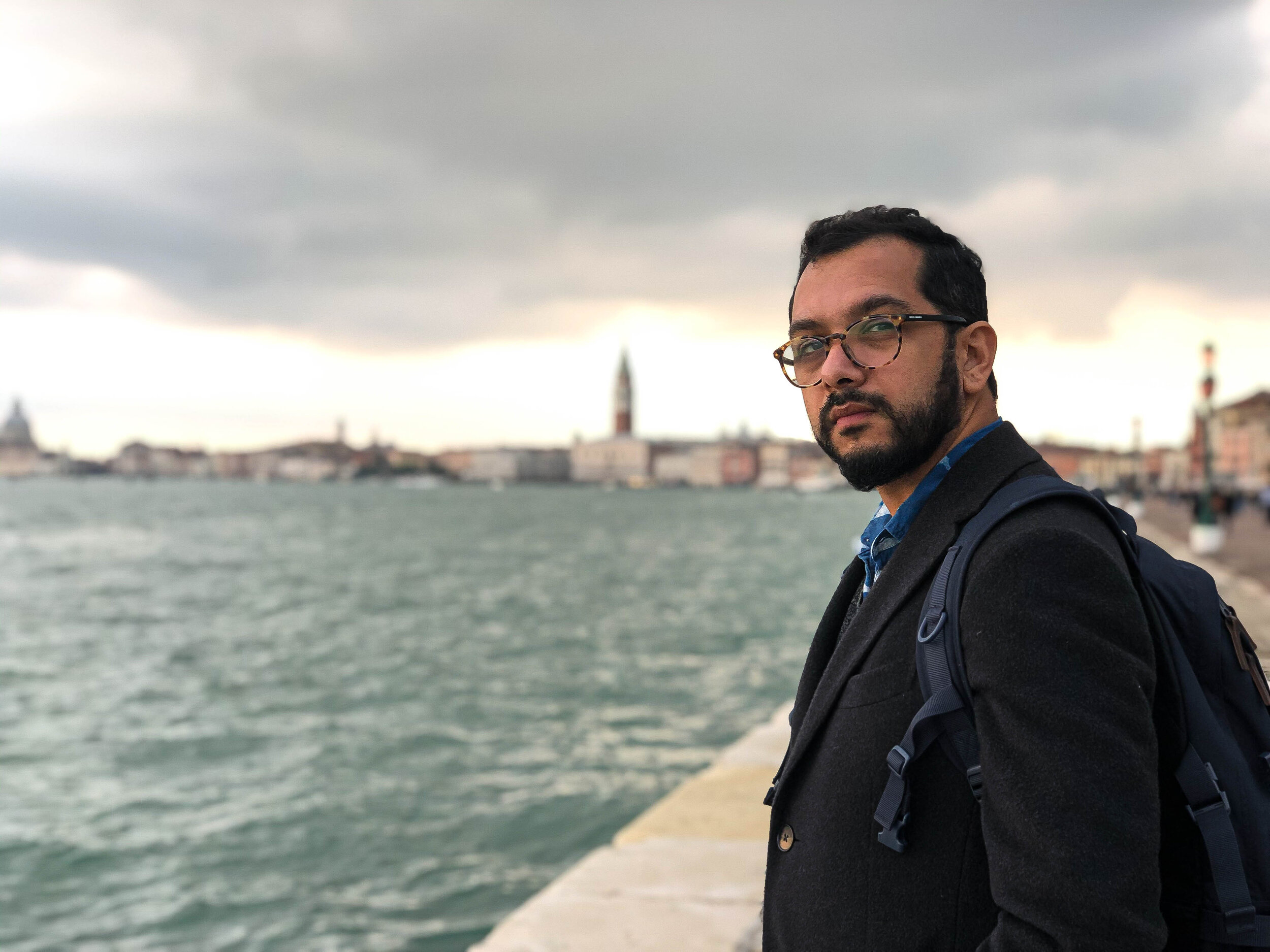
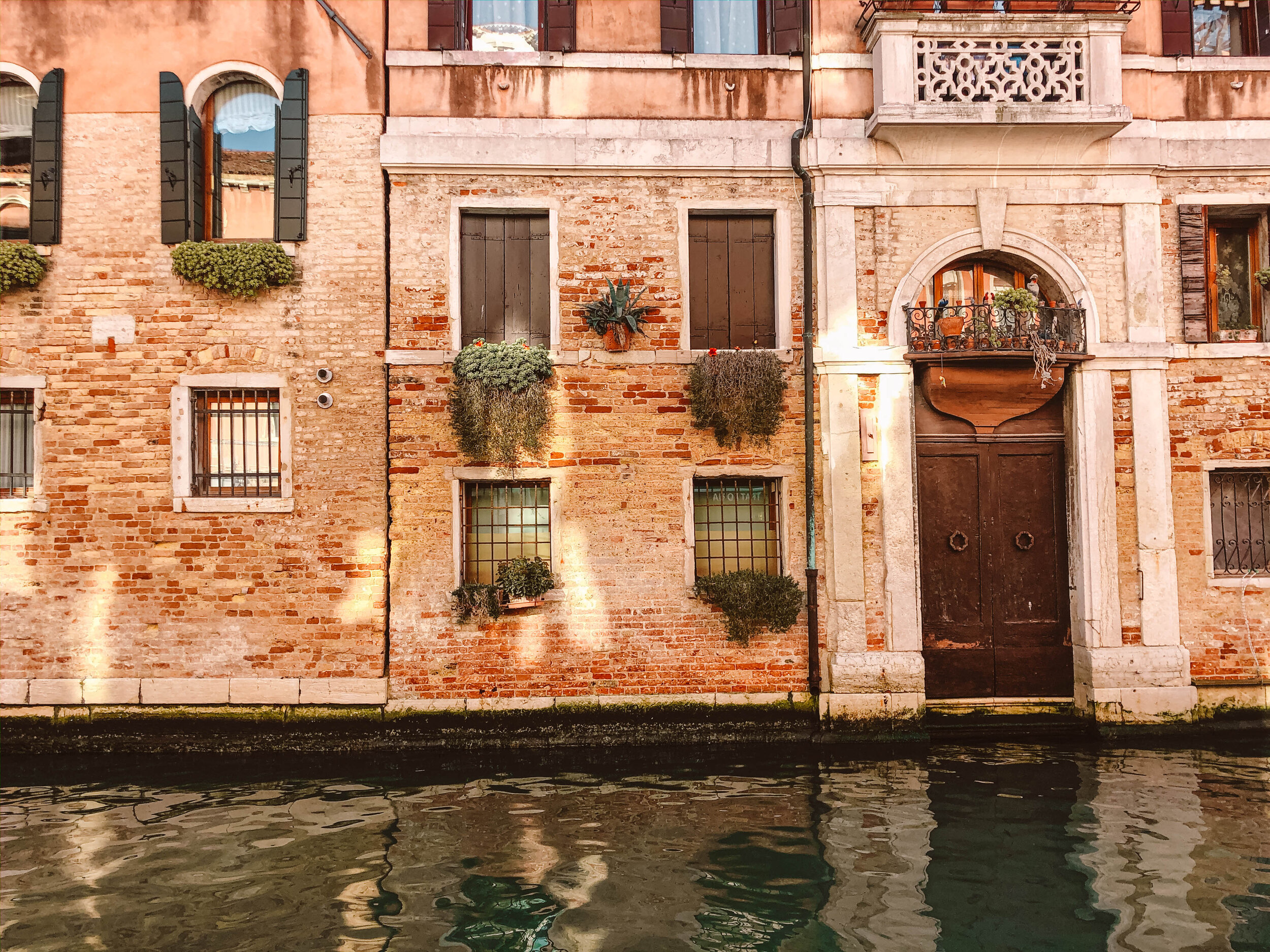
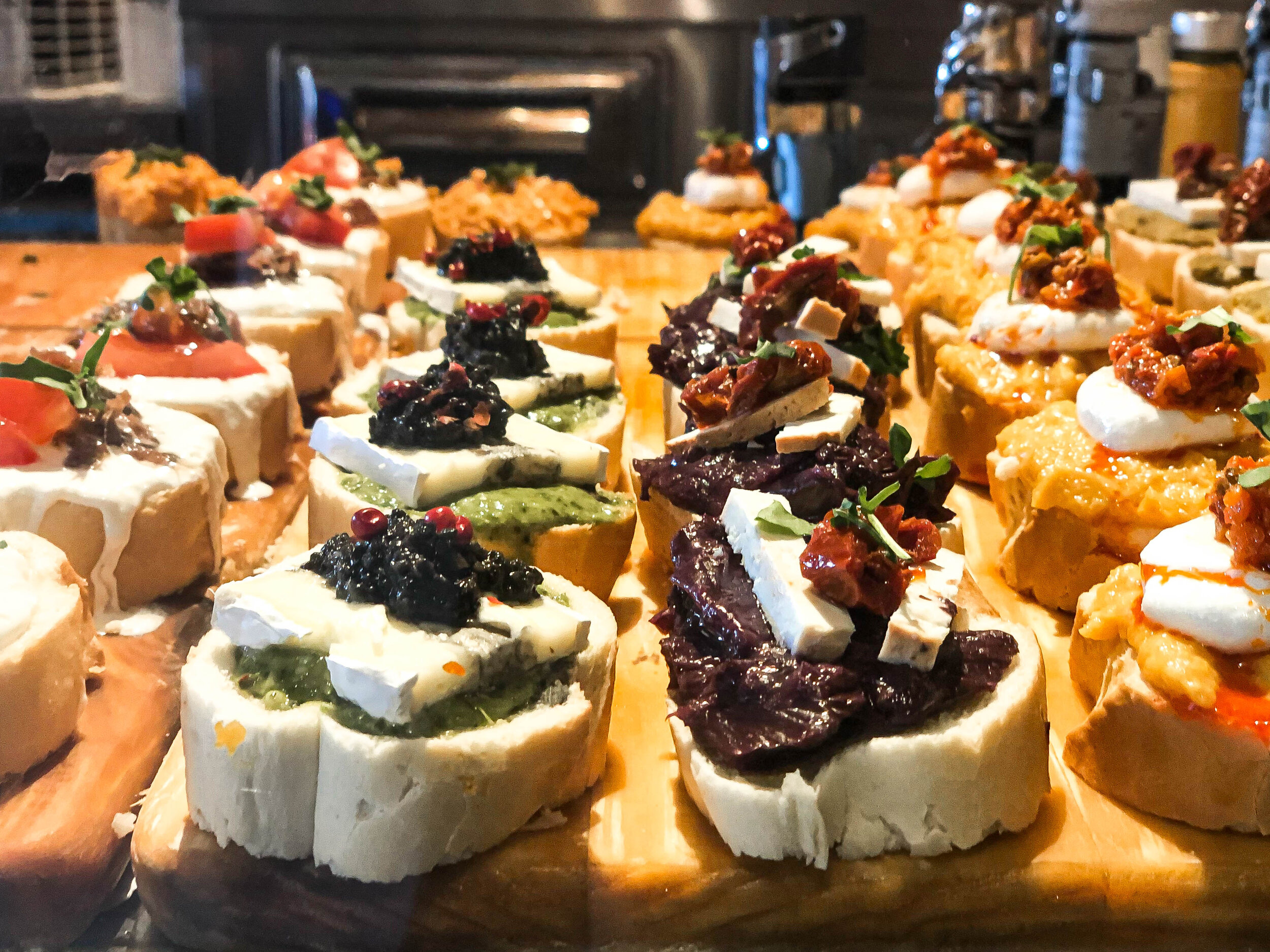
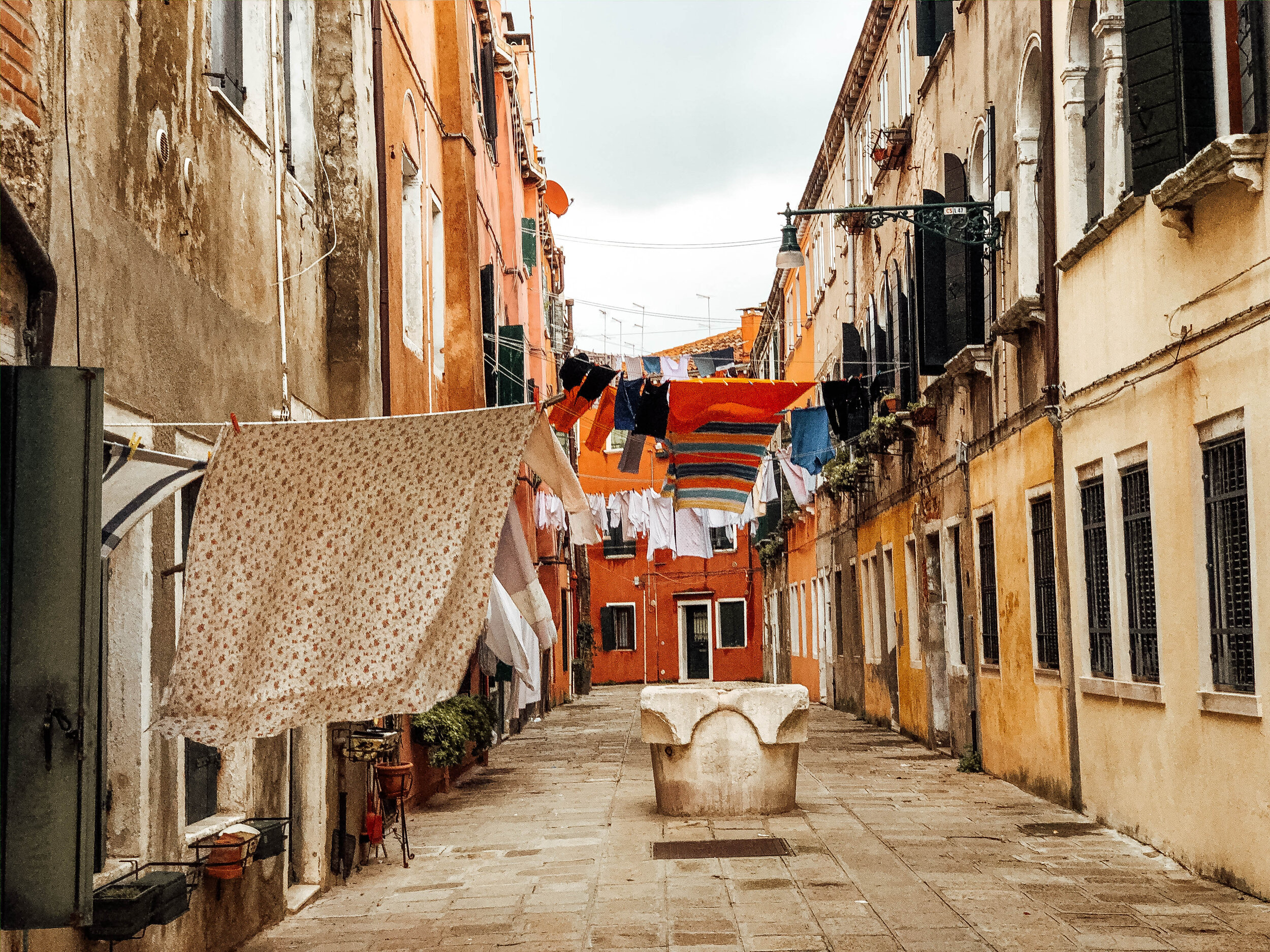
A good bet is to wander through the Santa Croce, Arsenal, Canneregio or the university neighborhoods. They feel local and authentic, are far less crowded and just as beautiful as the more touristy areas. Canneregio is particularly cool. We only had a few hours here on our last day, and I wish we had discovered it earlier. Canneregio is above the Grand Canal and near the train station but feels relatively unvisited by tourists. It’s full of bacari and tiny little restaurants and cafes along the canalfront, and has a low-key, artsy vibe.
Eat and Drink like a Venetian
Contrary to popular belief, it is possible to have a bad meal in Italy. And out of most places I’ve been in the country, I think that Venice has the worst-reputation, food-wise. There are simply a lot of sub-par restaurants in the city, unsurprisingly around the more touristic areas. BUT don’t let that stop you. Some of the very best places we ate at were right next to the Rialto market and bridge. There is lots of great food in Venice: the key is to eat and drink as the Venetians do. With a few exceptions (see below), skip the sit-down restaurants. The bacari, like our AirBnB host told us, is where it’s at. It’s hands down the cheapest way to eat in Venice, and the most fun.
So what’s a bacaro? It is a small wine bar that serves “cicchetti,” bite-sized Venetian tapas that go for about 1-2 euro a pop. The Venetians are sea-farers, so most of the cicchetti we saw and ate were little pieces of toast or sandwiches with seafood toppings (the baccalà mantecato, a creamy salted codfish, is very common), but there are some with cured meats and others that are vegetarian. Bacari are all over the city, and some can be teeny teeny teeny-tiny little places (where the whole bar is just standing room only or with only a few stools). It might be a little intimidating at first, especially if the bar is crowded with people. But just belly on up, order a glass of wine and point to whatever snacks look good in the window. The best bars are the littlest ones, where everyone is holding glasses and spilled out onto the pavement outside.
And it is never too early for an apertivo. Everyone was having a glass of wine or an Aperol spritz by 11am...even on a Thursday. Venice, I like your style.
A word on Aperol: we overheard a waitress tell a British tourist that the Aperol spritz was invented in Venice, and a bit like the “official” drink of Venice. Raunaq and I both chuckled, thinking this waitress was clearly pulling the girls leg - but throughout our trip, we began to realize that literally everyone was drinking them. Maybe it’s because they are the cheapest spritz’s around, most costing under 3 euro (compared to the 16 franc spritz’s in Zurich), maybe it’s because gosh darn it, they are refreshing and delightful, or maybe they are the official drink of Venice after all! No matter the reason, they are ubiquitous and I’d say no trip to Venice is complete without one.
Recommendations:
Baraci spots to try: Al Merca (by Rialto Mercato, get the tuna sandwich!), All Arco (Rialto Mercato), Majer (a few locations, amazing focaccia), and Al Timon (Canneregio).
For an actual sit-down dinner, Cantina Do Spade (near Rialto Bridge) or Nevodi Venezia (Arsenal) were divine. Osteria La Zucca (Santa Croce) had amazing reviews, but we couldn’t get reservations.
Wine: We have gotten lucky lately with discovering a delicious new wine varietal while visiting new cities or countries, and this trip to Venice was no different. Try out the Soave. It’s a dry white wine from the region, and goes GREAT with all the fishy cicchetti you’ll be eating.
Pizza: After one too many spritzs and cheap glasses of delicious wine on night, I was set on having a slice of cheese pizza. I just wanted a slice. Didn’t even have to be good pizza. So we found a little shop by our apartment that was still open, and I ordered a pizza margarita normale for 2 euro. The guy behind the counter then opened up a drawer, pulled out a ball of fresh pizza dough and began rolling it out. “No, no no,” I said, “I just wanted a slice, normale.” He smiled. “This is the normale.” I got an entire, freshly made, cheese pizza for 2 euro. I have no idea where this magical pizza stand is - but I have an inkling that stands like these are all over once you stray away from the main tourist trail.
Biennale 2019
Ah yes, the “real” reason we came to Venice. Biennale is an annual art exhibition in Venice, with hundreds of pieces of modern art by artists from 90 countries. This years theme was “May You Live in Interesting Times.” The title is an English phrase, that has long been mistakenly cited as an ancient Chinese curse that invokes periods of uncertainty, crisis and turmoil: "interesting times", exactly as the ones we live in today. I can think of a few stronger words than “interesting” that describe the world we live in today, but I guess I will have to save it until I curate my own international art show. We didn’t really see many “cultural” sites while in Venice, but I feel like two days at Biennale more than made up for it.
The art was impressive. Many touched on themes of migration, identity, racism, excessive consumption and the relationship between humans and the natural world. It was all very interpretative, the type of art that forces thought and provokes conversation. One of my favorite installations was from Indian artist Shilpa Gupta called “For, in your tongue, I cannot fit.” 100 microphones were suspended from the ceiling, and functioned as speakers. Below each microphone, a piece of paper was spiked onto a stand with a poem or verse. All were writings from political prisoners throughout the centuries. From each microphone, a different person’s voice emanated, reading the corresponding verse in a synchronized, almost haunting, chorus.
The Impossible City
Venice. The impossible city made possible. A city built on 118 islands in a lagoon, that floods every year and yes, is sinking. The fact that Venice even exists is extraordinary. The earliest settlers of Venice built the city by lining the canals with wooden stakes, driving the poles down through the water, mud and sand to the firmer clay below. Wooden platforms were placed on the poles, and the city was built up from there. That is incredible in of itself, but even more incredible is that these submerged wooden foundations have stood the test of time. The water of the Venetian canals are low in oxygen, which means it’s difficult for microorganisms responsible for wood decay, like fungi and bacteria, to grow. But not only did the wood not decay, the salt and minerals in the water seeped into the wood, gradually crystalizing the wooden stakes into a solid, stone-like material. Whether this was an incredibly lucky accident, or artfully-planned forward thinking, I have no idea, but it is a pretty powerful testament to human ingenuity. A city built on wood and water.
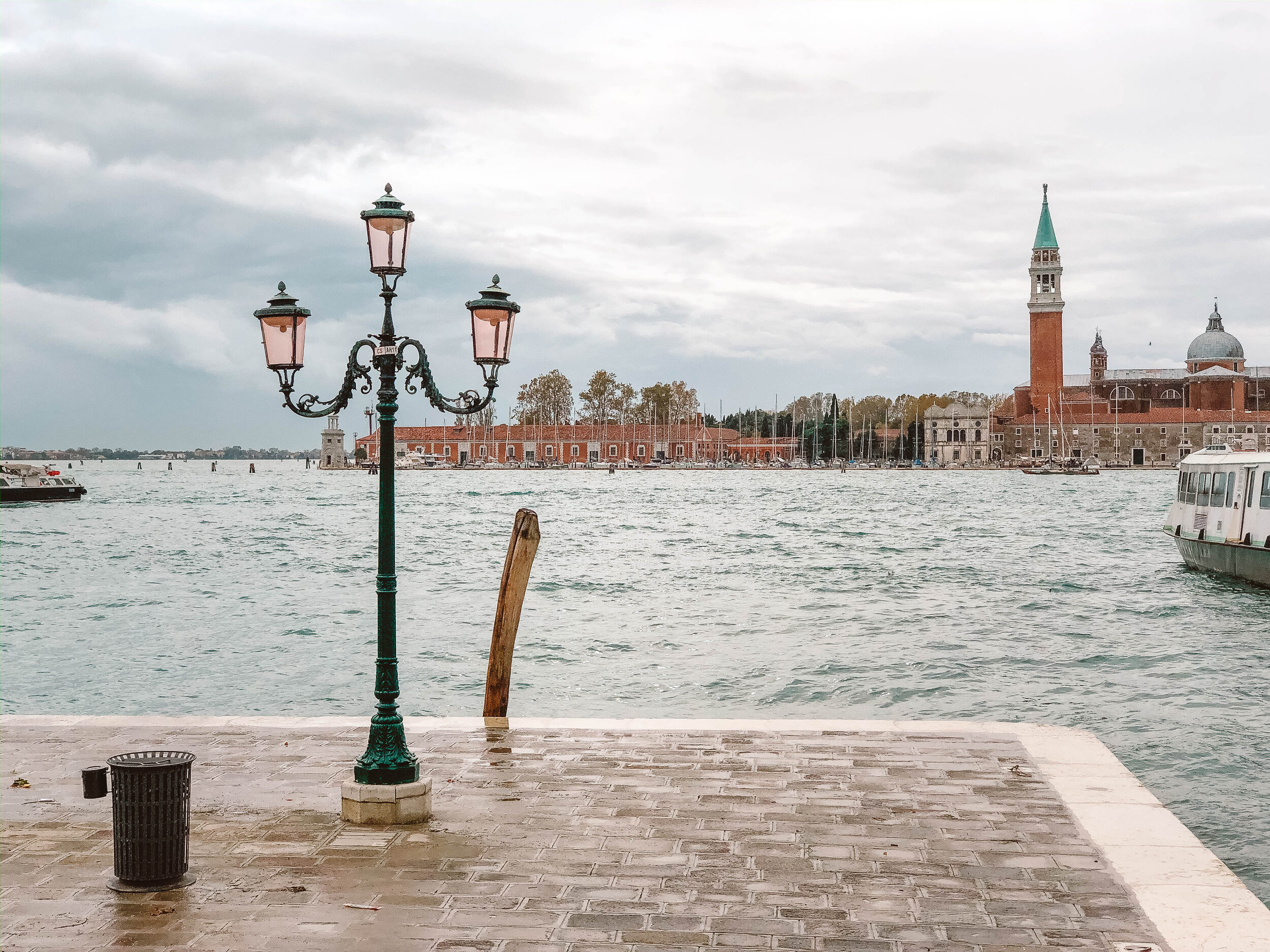
One afternoon after Biennale, we were walking back to our apartment from Arsenal just as the sun was setting. The whole sky turned pink, then a fiery orange, outlining the gondoliers heading back to the grand canal and the distinctive domes and towers of the Venetian skyline. There is really no other city like this.
And it’s not just sinking - it’s drowning.
We left Venice on November 10. On November 12, the acgua alta surged to the highest point in 50 years, flooding a staggering 85% of the city. Two people died. St Mark’s Square was submerged by more than one meter of water, while the basilica was flooded for only the sixth time in 1,200 years. And it’s hard to write a post about Venice without talking about the elephant in the room.
Water has always been a part of Venetian life. Flooding has been a normal occurrence in Venice since it was built - it’s on a lagoon on the edge of the sea, after all. But they have never happened with such frequency and such severity before. The week we were there, the city flooded three times, each tide higher than the one before. Venice’s existence depends on the delicate balance between the city and the natural world, and it’s clear to see how its fragile beauty is imminently threatened. It’s already happening. There are so many consequences of climate change, so many things we will lose - and a grand city like this could be one of them.
So travel and enjoy what this great world has to offer, but please, do it thoughtfully and responsibly. For Venice, I found this page from the #EnjoyRespectVenezia awareness campaign helpful, along with this guide on how to handle garbage and recycling (if you are staying in an apartment/AirBnB instead of a hotel). We are all in this together.


Venice is a fascinating city. It’s a living museum. Do as I say and not as I do, and take a little bit to read up on the history of the city before you visit (or, watch a short video here). I loved so much about it: the tiny bars with the tiny snacks, the doorways opening up to water, the quiet piazzas that slowly come to life at dusk, the craftsmanship of the gondolas and murano glass, the history of the doges, the harlequin masks, and the the sheer coordination, resiliency and vibrancy that makes a city like this tick. I was worried about overwhelming crowds, but honestly, they were easy enough to escape and there are so many tucked-away places where the local scene is thriving. Venice completely won me over, just as the city has been doing to its visitors for centuries.
Travel tips:
Luggage: I’d consider bringing hand luggage (that you carry) or a backpack, especially if you are only there for a weekend. There are lots of bridges and steps, and we saw many a tourist struggling with up and down them with rolling suitcases. More importantly, if the city is flooding while you are there - you are going to want a backpack. No one wants to carry a massive rolling suitcase over their head to the train station.
Gondola rides: Are super expensive. If you want to see Venice from the canals, consider taking a public vaporetto instead.


